Outsider art: the must-see outdoor installations for 2017
From surreal sculptures to multi-coloured murals, we bring you the best of the world’s installations en plein air...
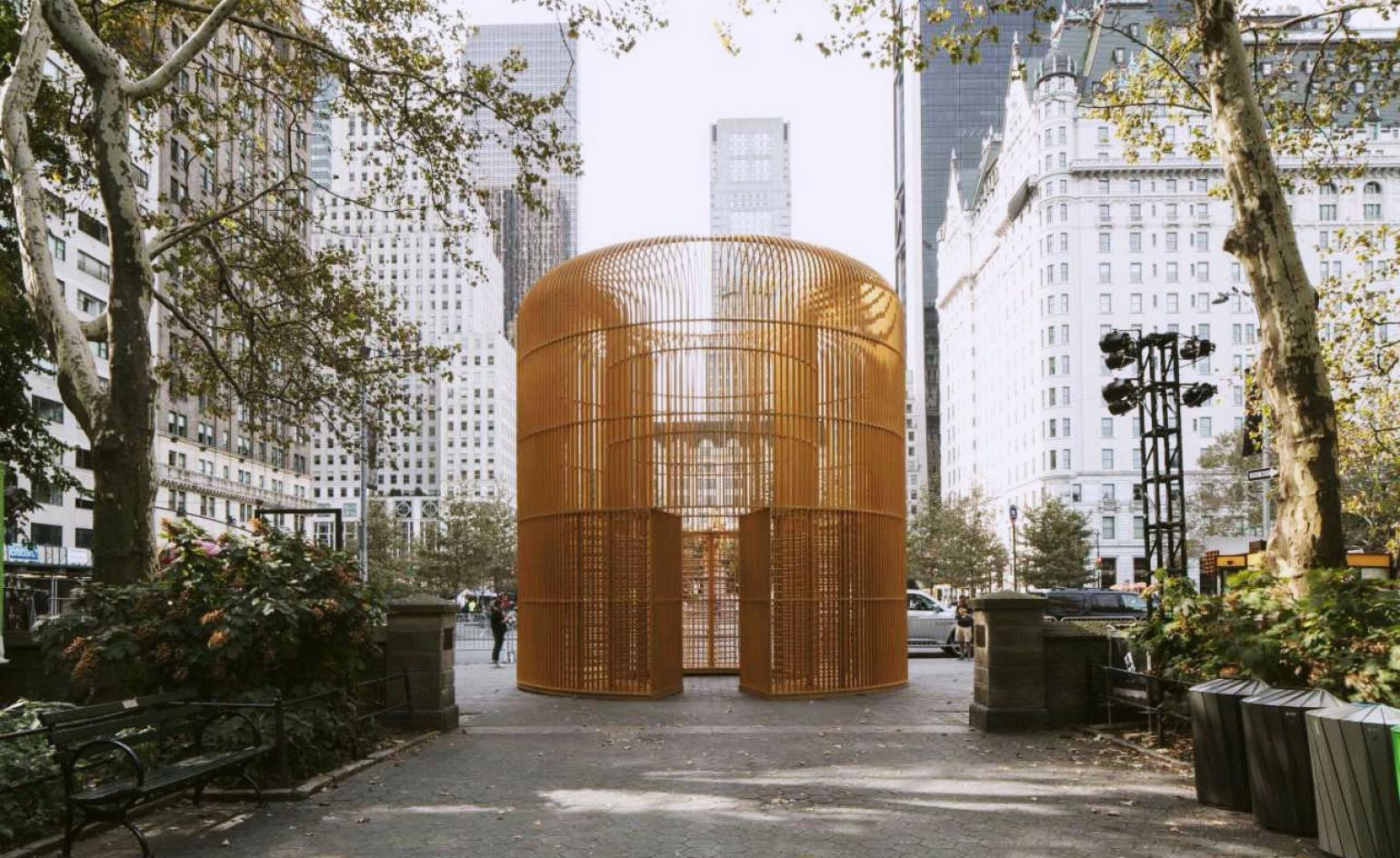
Good Fences Make Good Neighbors, by Ai Weiwei
Art activist Ai Weiwei has returned to themes surrounding the worldwide migration crisis for his latest public installation in New York. Spread across five boroughs, the sprawling exhibition features new large and small-scale works, the highlights of which are two ‘fence’ structures, Gilded Cage and Arch, constructed in collaboration with UAP – a leading public art consultant and manufacturer of large scale installations (and the ideal partner for a project of this scope and scale).
Writers: Hadani Ditmars, Luke Halls, Katie Meston, Elly Parsons, Holly Patrick and Daven Wu
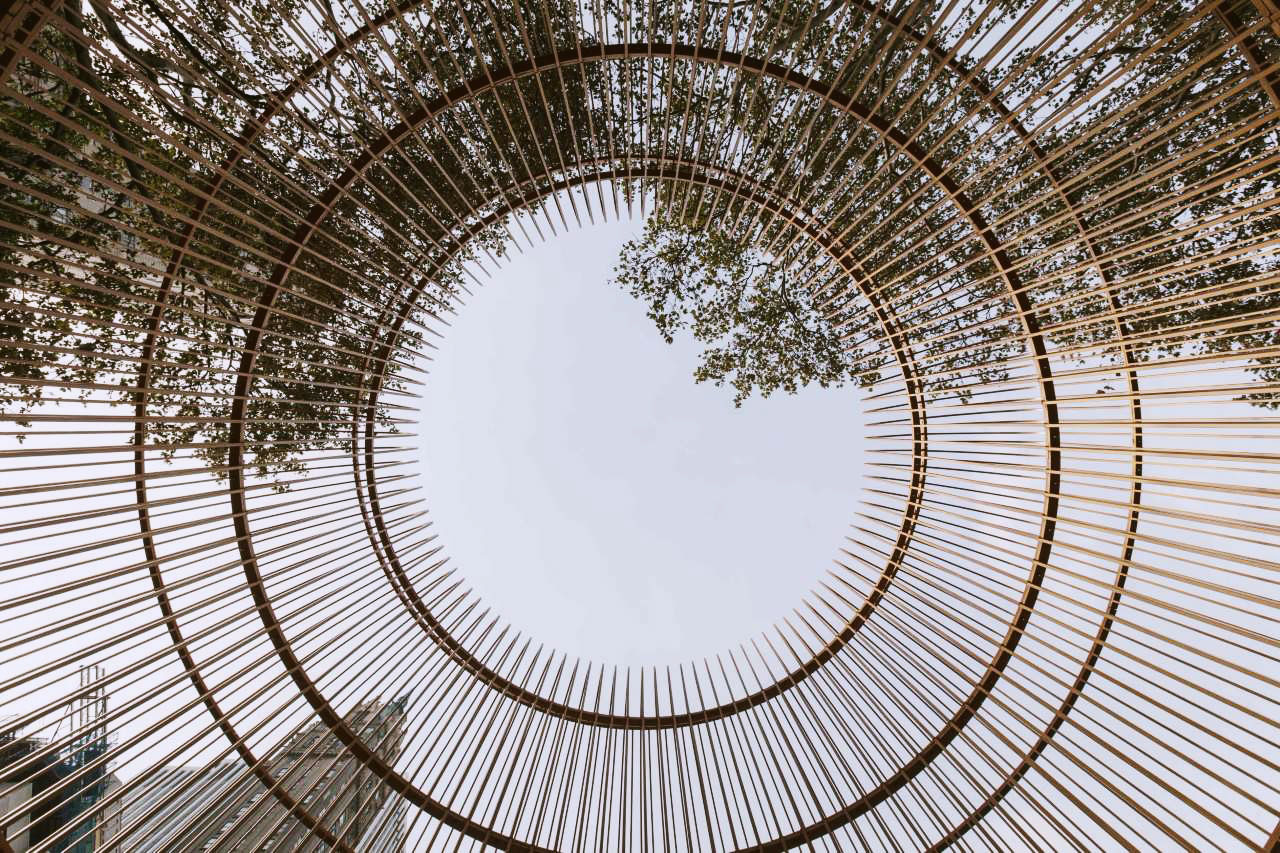
Good Fences Make Good Neighbors, by Ai Weiwei
UAP worked with Public Art Fund and the artist to develop and fabricate works that transform some of New York’s famous architectural landmarks into large-scale public art installations. Gilded Cage uses its Central Park location to raise questions around barriers. The park’s open, natural space sits in contrast to the structure’s inhibiting bars and turnstiles, in which visitors are encouraged to enter, helping us to embrace ideas of freedom and restriction, head on.
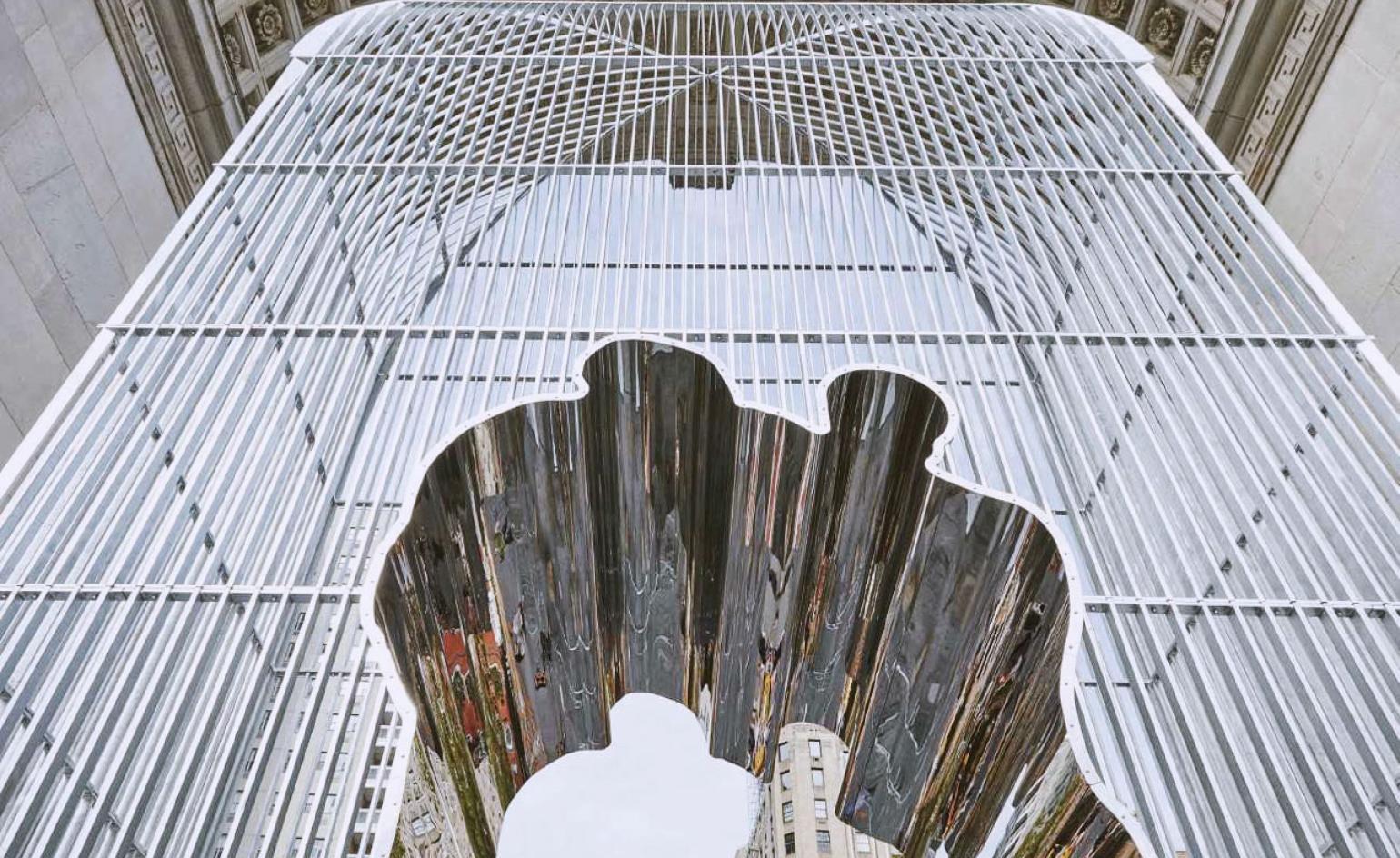
Good Fences Make Good Neighbors, by Ai Weiwei
The 40ft Arch (pictured) at Washington Square Park, grows out of the existing urban infrastructure, located directly inside the triumphal Washington Square Arch. The cage’s most notable feature is its poignant mirrored archway, which silhouettes two human profiles, cutting through the barrier together in a break for freedom.
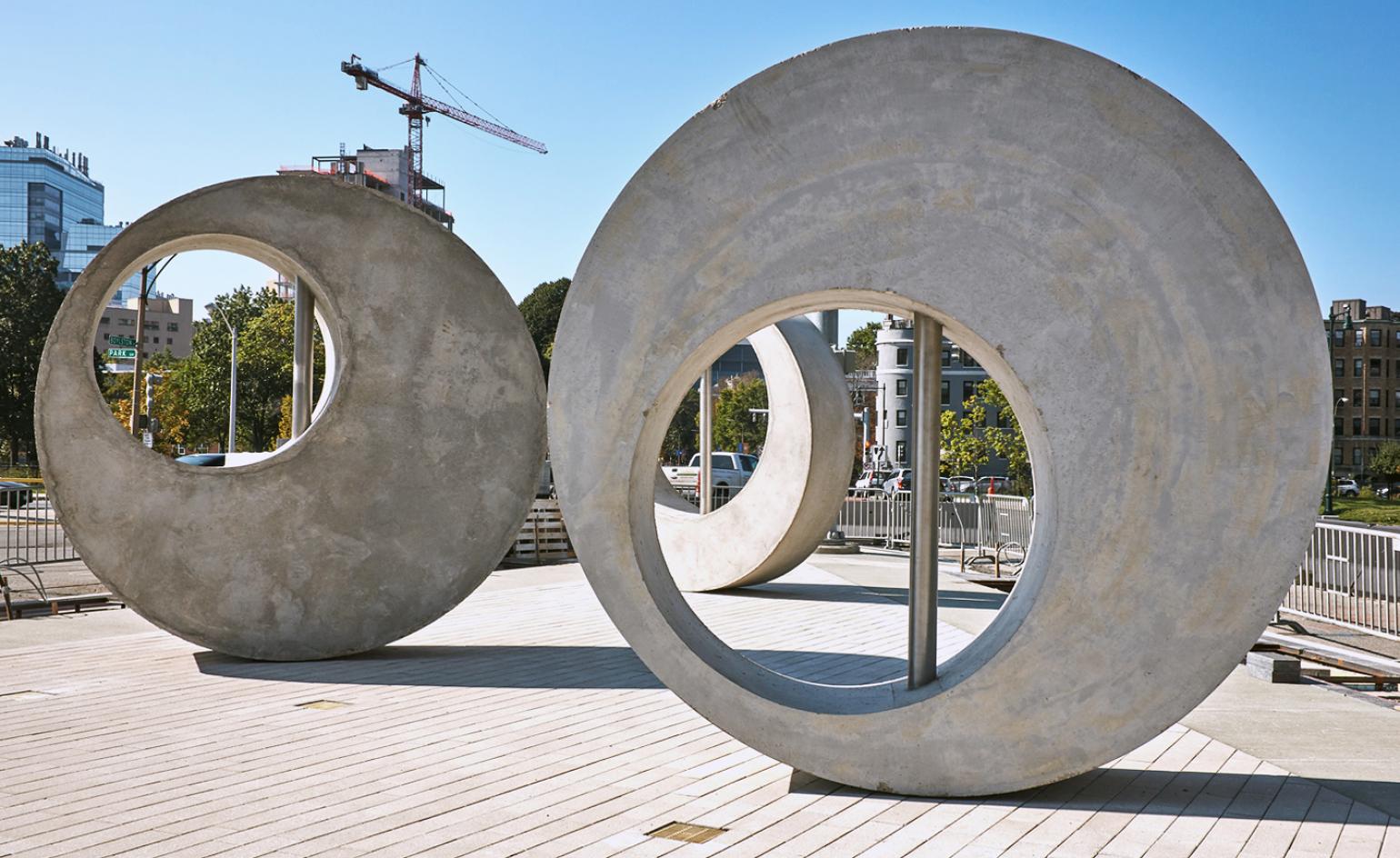
Plaza (Arcade), by Alexandre da Cunha
London-based Brazilian artist Alexandre da Cunha’s latest ready-made sculptures have arrived in Boston – the first permanent, public installation of his to be constructed in the US. Ever-intrigued by overlooked objects, da Cunha was inspired by sewer pipes for his three disk-shaped structures, and used industrial, precast concrete (the same kind used in drainage systems) for the works.
Pierce Boston
, 401 Park Drive Boston, MA 02215
Writers: Hadani Ditmars, Luke Halls, Katie Meston, Elly Parsons, Holly Patrick and Daven Wu
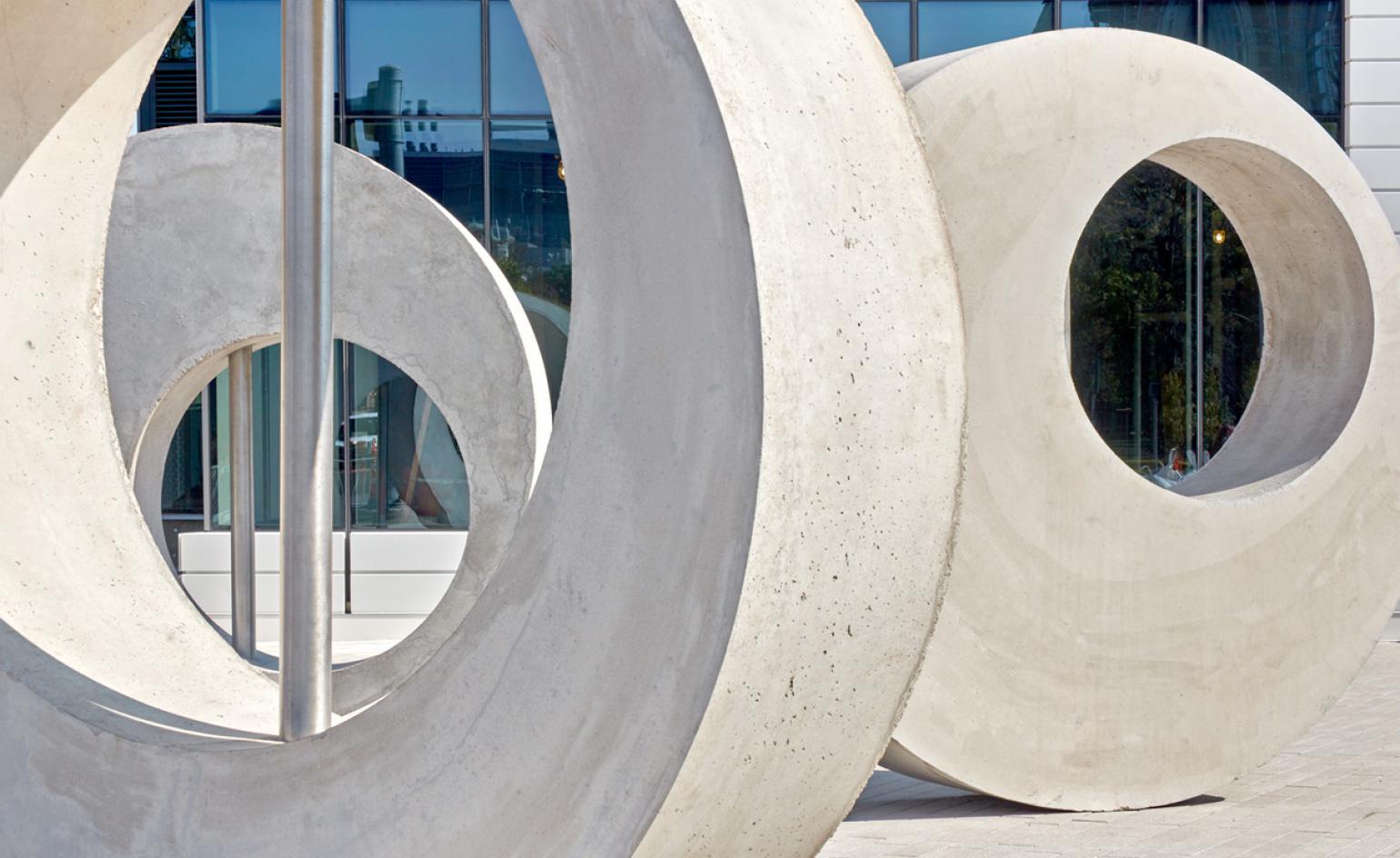
Plaza (Arcade), by Alexandre da Cunha
Located in the city’s Fenway area, Plaza (Arcade) stands outside the Pierce Boston building (currently under construction) with its concrete skeleton on show. When completed, the Arquitectonica-designed space will be clad in glass – a home for luxury condos. Da Cunha was keen to develop a plaza that could double as a social space, bringing public art to the forefront of modern city living. The pieces are a testimony to Boston’s status as an artistic hub.
Pierce Boston
, 401 Park Drive Boston, MA 02215
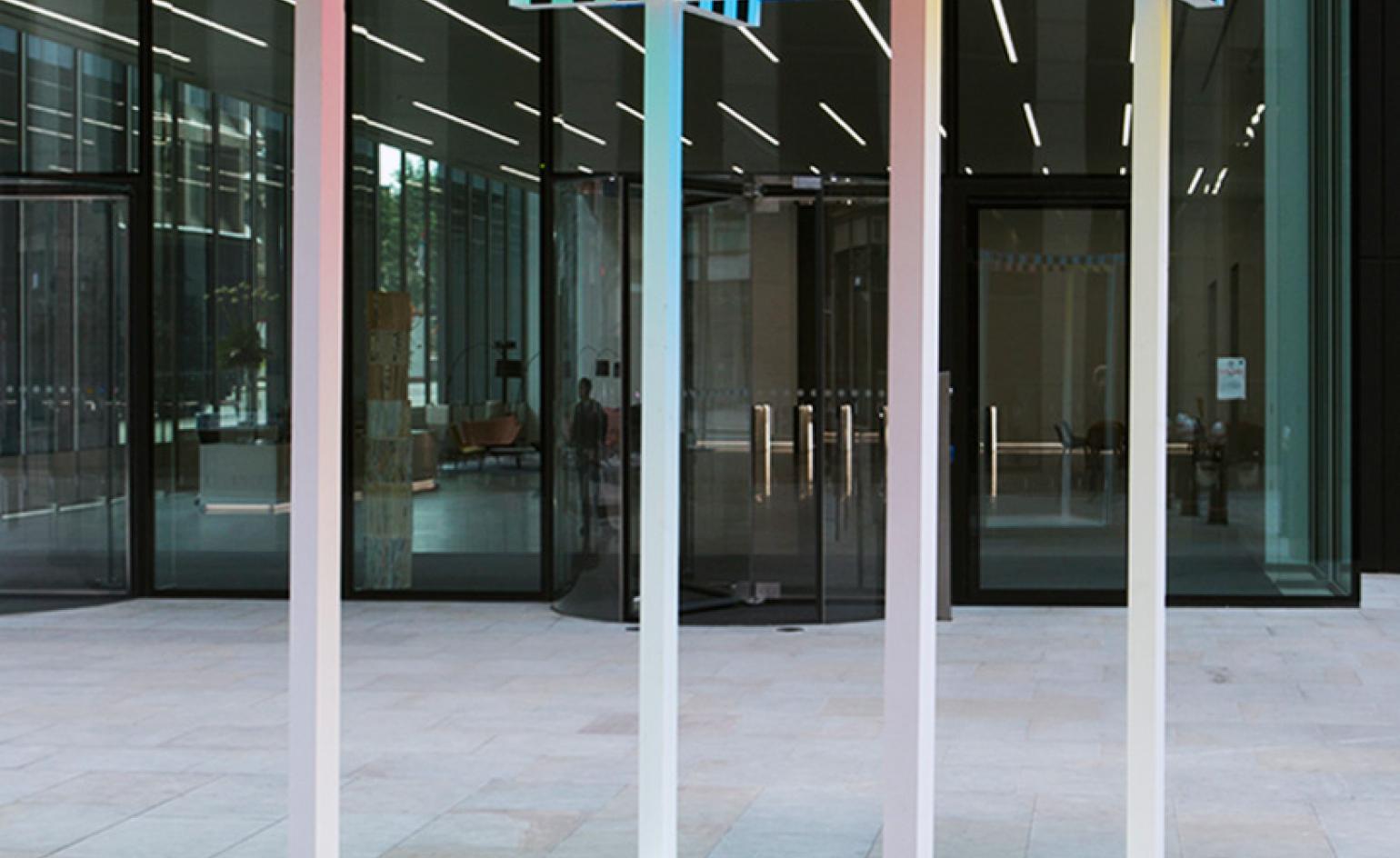
Sculpture in the City, City of London
Each year, London’s Square Mile turns from a bustling business hub into a cultural sculpture park. On view until May next year, the outdoor exhibition features works from the likes of Daniel Buren (installation pictured), Damien Hirst, Paul McCarthy and Martin Creed. Dotted amongst some of the capital’s most inspiring architecture (think The Leadenhall Building and Lloyd’s), each artwork is carefully placed in accordance to its urban surroundings. Mark Wallinger’s life-sized horse sculpture greets visitors at the corner of Bishopsgate, and Nathaniel Rackowe’s Black Shed Expanded (2014-16) teeters on Bury Court.
Various locations around the City of London. Until May 2018.
Writers: Hadani Ditmars, Katie Meston, Elly Parsons, Holly Patrick, and Daven Wu

Muro, by Bosco Sodi
‘Muro’ is Brooklyn-based Mexican artist Bosco Sodi’s first foray into public installation in New York – and it’s a politically charged one. Comprising 1,600 clay timbers hand-fired in his studio in Oaxaca, Mexico, and transported to the final site by truck, the materials embarked on the same journey an immigrant may make into the US. Sodi invited the public to tear down the wall on the same day it was built – an act of both defiance and therapy. The artwork then becomes a communally-owned, fragmented sculpture. Its construction and removal encourages civic participation, and highlights the importance of a collaborative response to Trump’s proposed border wall.
Washington Square Park, New York, USA
Wallpaper* Newsletter
Receive our daily digest of inspiration, escapism and design stories from around the world direct to your inbox.
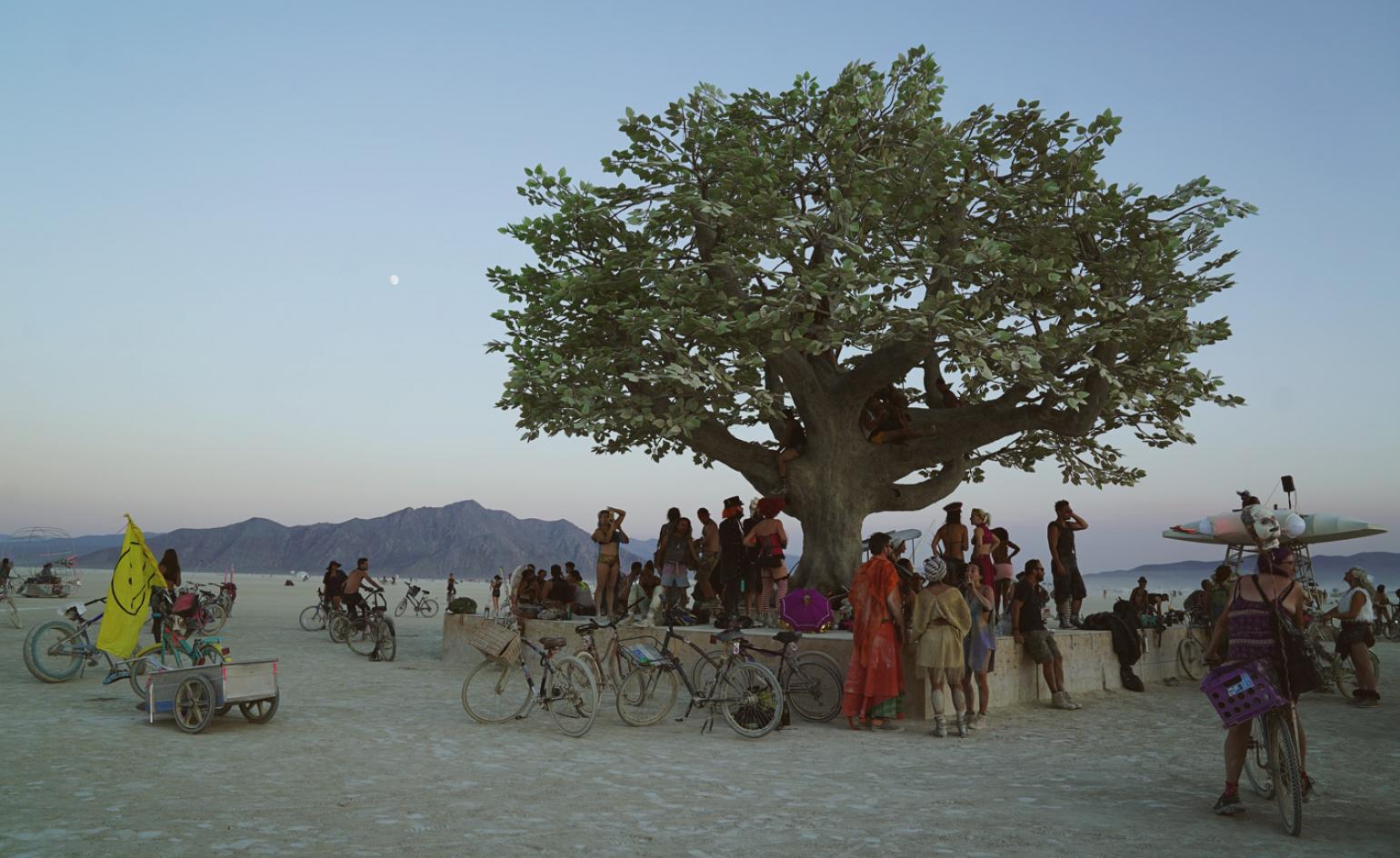
Tree of Ténéré, by Studio Drift
Amsterdam-based duo Studio Drift has created an interactive light canvas tree for Burning Man Festival in Nevada, USA. Made using 175,000 LED lights and open-source control software, the 10m tall tree is a re-imagination of Niger’s Tree of Ténéré, an isolated acacia that once grew in the middle of the Sahara Desert. In celebration of its tenth anniversary, Studio Drift drew inspiration from a previous work, a light installation consisting of delicate glass tubes mimicking a flock of birds in flight. Like ‘Flylight’, the tree is site-specific and designed to react with its surroundings. The three separate ‘swarm’ algorithms can be controlled by a headset, which measures the wearer’s movement, state, heartrate and eye blinking to co-ordinate with the direction of the light patterns – a palatial, climbable canvas on the Black Rock landscape.
Burning Man Festival, Black Rock City, Nevada, USA
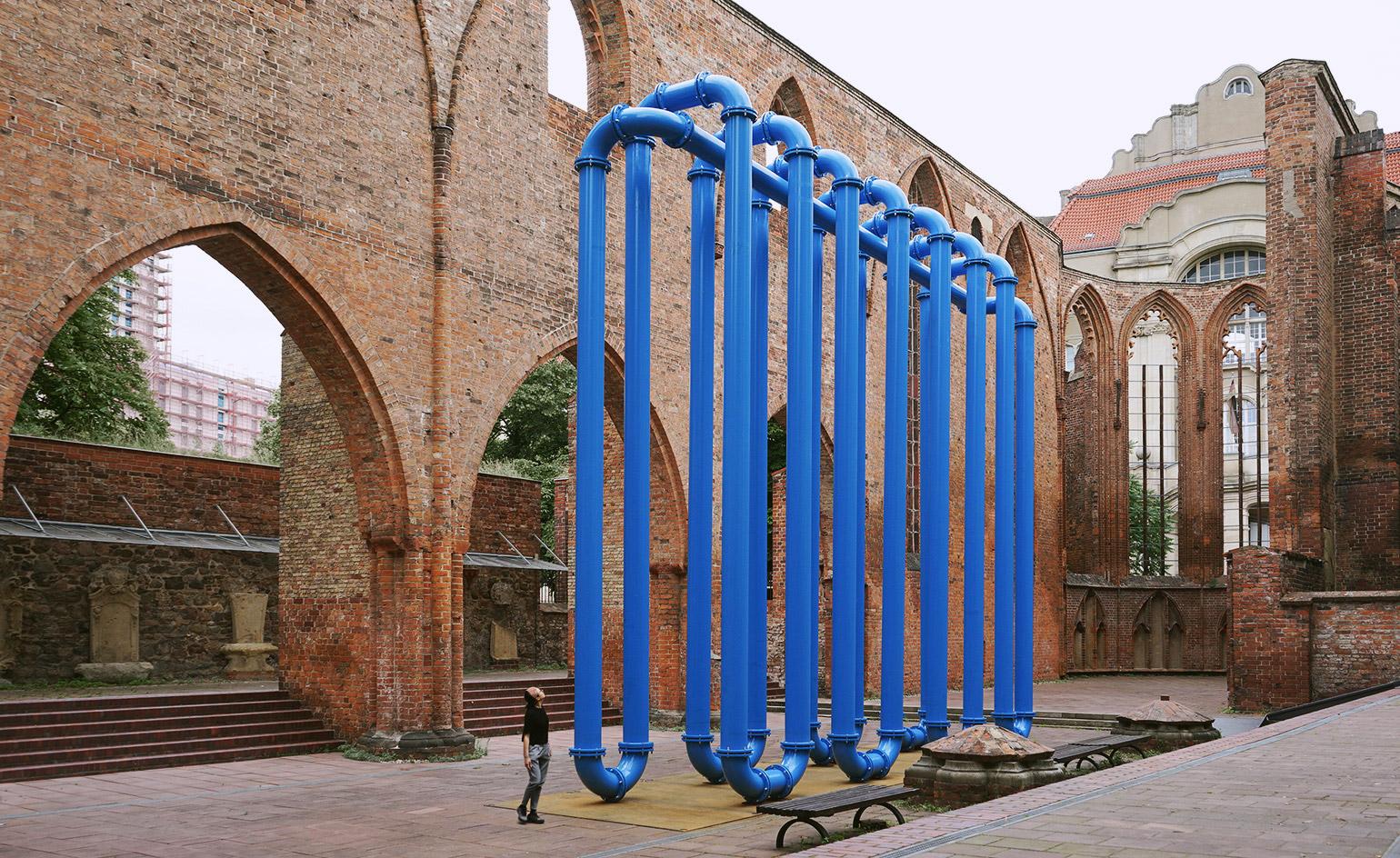
Radiator, by Borgman and Lenk
The southern façade of Berlin’s Ruine der Franziskaner Klosterkirche is heating up, thanks to Anna Borgman and Candy Lenk’s Radiator installation. Or not, as the ‘meaningless mechanical sculpture’ has no functional heating properties whatsoever. At 10m tall, and weighing 11 tonnes, the project riffs on various unsuccessful repair attempts the Franciscan monastery has undergone since its destruction during WWII. Borgman and Lenk see the tongue-in-cheek installation as part of a new, ‘programmed failure’ to rebuild the space. The German duo make use of hollow steel pipes to simulate the vacuity of the gothic church, and a looping structure to echo its lofty archways.
Until 31 October. Ruine der Klosterkirche, Klosterstrasse 73a, 10551 Berlin.
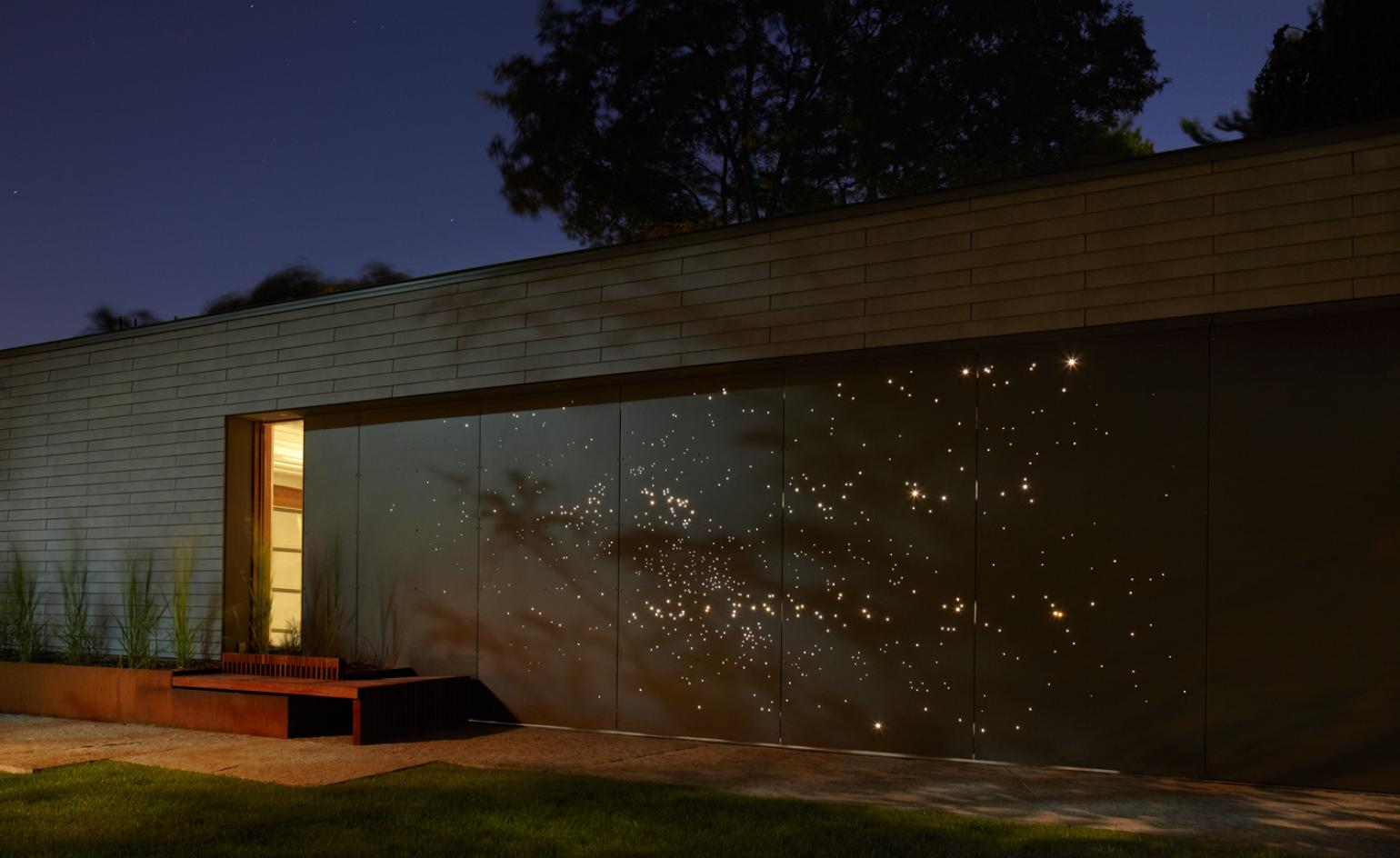
Don River House Constellation Wall, by LGA Architectural Partners
Toronto-based LGA Architectural Partners aims to create ‘contextually-sensitive’ pieces – and its ‘constellation wall’ at locally-treasured private residence Don River House is no exception. Perfectly timed with North America’s full solar eclipse on 21 August, the fiber-cement board features celestial maps of Sagittarius and Scorpio. In design, the wall nods to the natural light Orion constellation seen at Le Corbusier’s Saint-Pierre de Firminy in France – it unites the architecture with the after-dark scenery, in keeping with Don River House’s mission to engage its residents with their surroundings.
Don River House, Toronto, Canada.
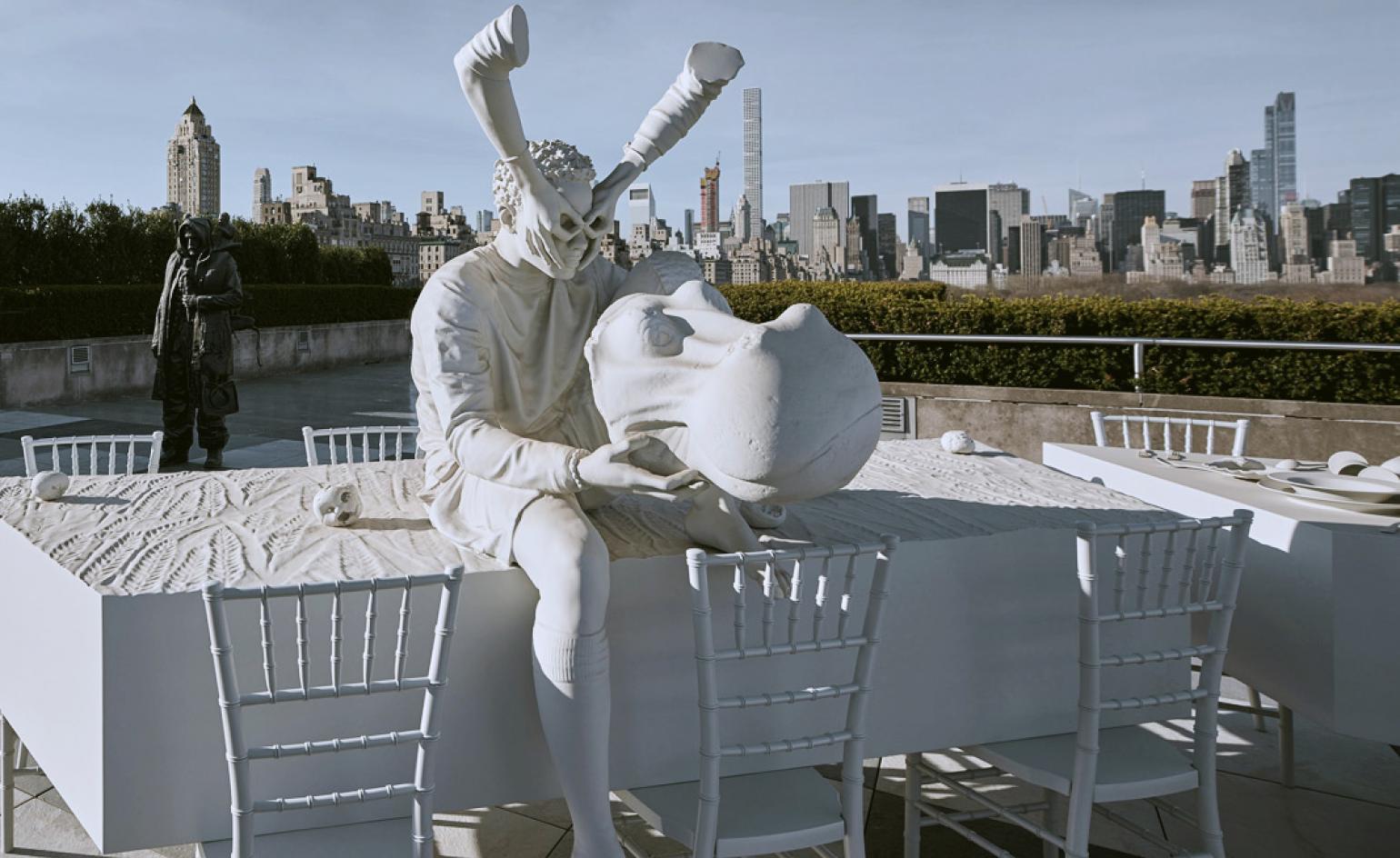
The Theater of Disappearance, by Adrián Villar Rojas
Argentinian artist Adrián Villar Rojas’ sprawling installation – strung across The Met’s Cantor Roof Garden – features 16 sculptures, melding human forms with objects from the museum in a truly surreal, monochromatic tableau.
The Met Fifth Avenue, Cantor Roof, 1000 5th Avenue, New York, NY 10028, USA. Photography: Jörg Baumann. Courtesy of the artist, Marian Goodman Gallery, and Kurimanzutto, Mexico City
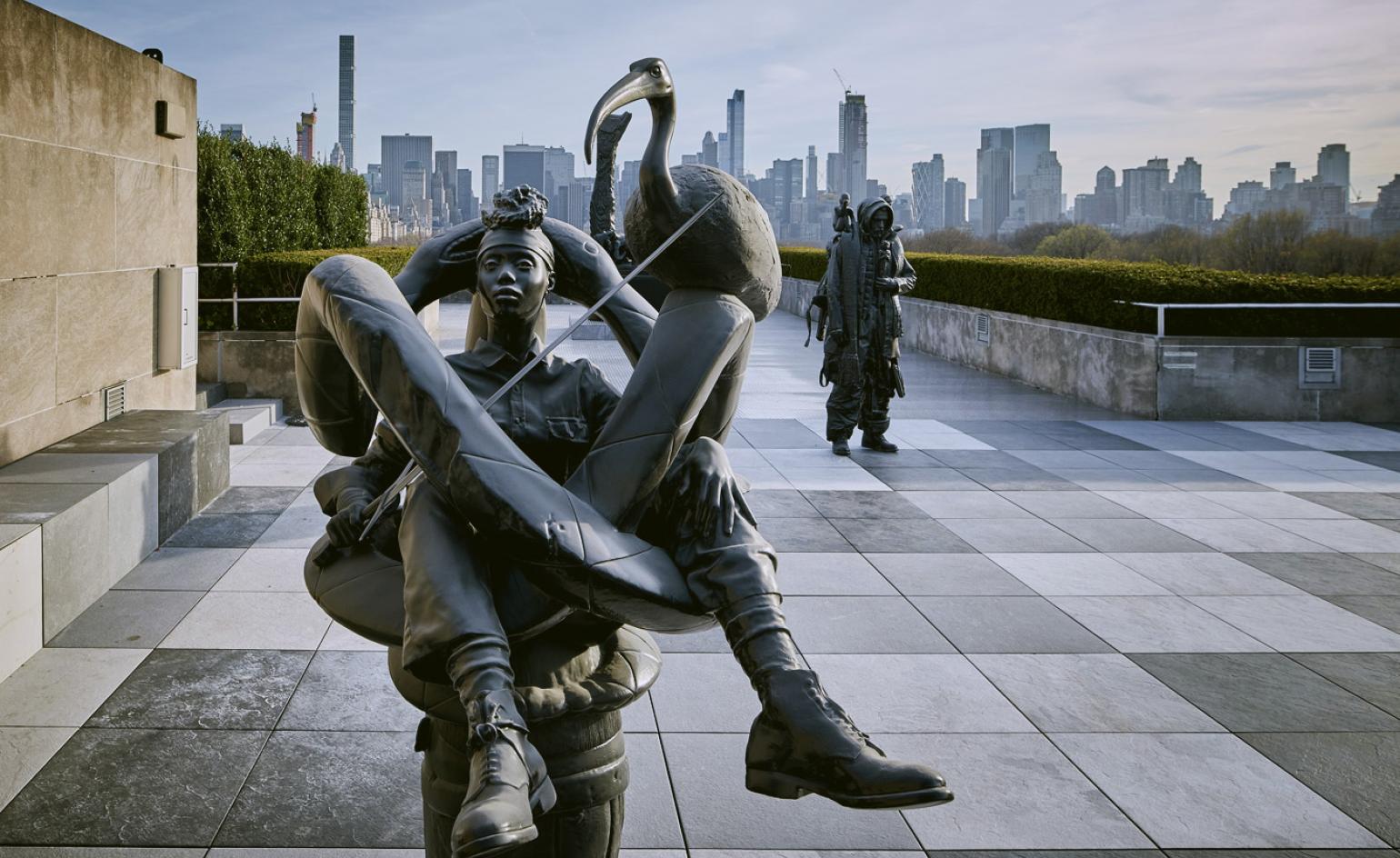
The Theater of Disappearance, by Adrián Villar Rojas
The artist immersed himself in the Met’s collections, interviewing curators, researchers, conservators and imaging specialists in an attempt to understand the history human culture evoked by the chosen pieces.
The Met Fifth Avenue, Cantor Roof, 1000 5th Avenue, New York, NY 10028, USA. Photography: Jörg Baumann. Courtesy of the artist, Marian Goodman Gallery, and Kurimanzutto, Mexico City
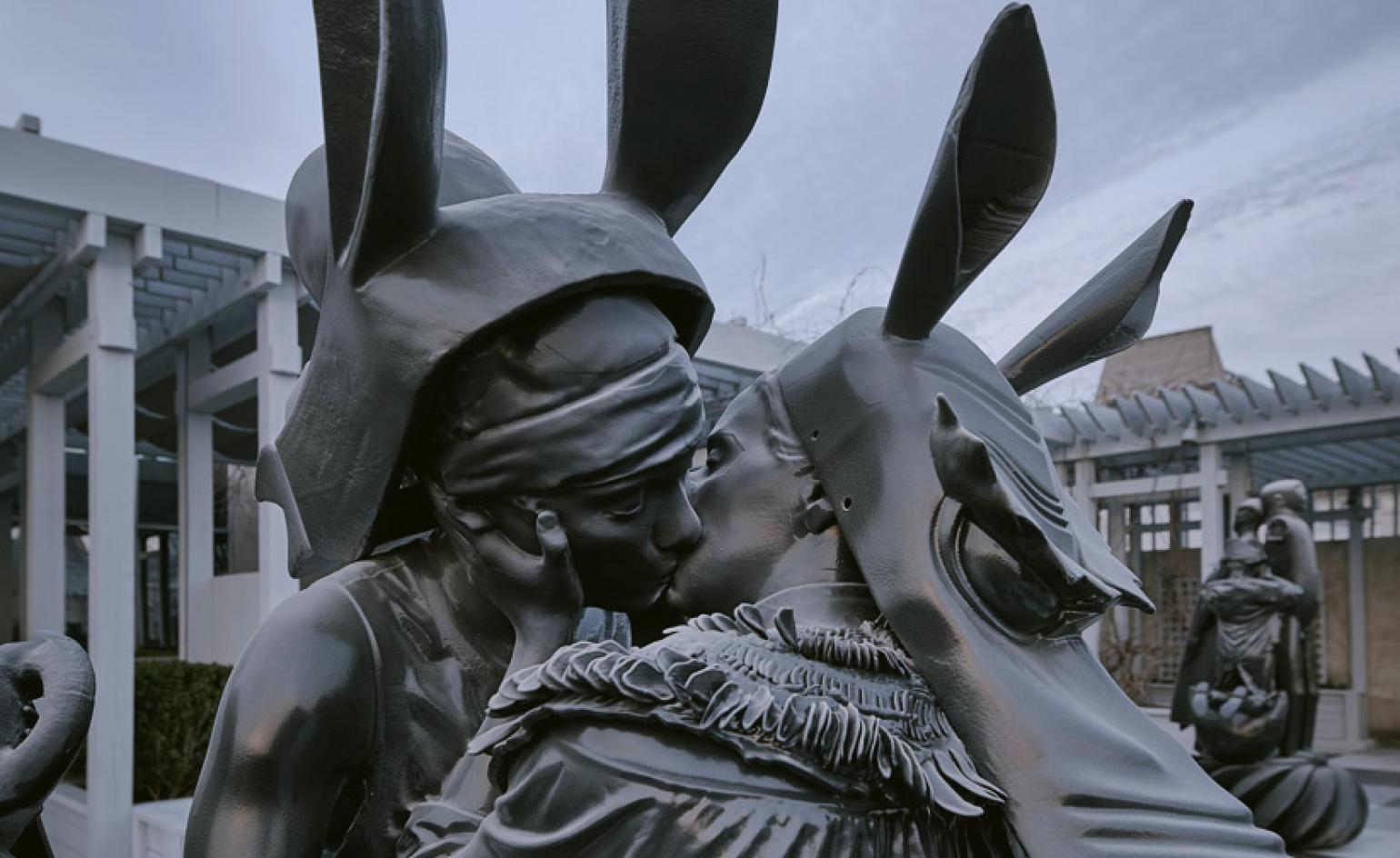
The Theater of Disappearance, by Adrián Villar Rojas
The pieces were then translated into sculpture via 3D scanning and advanced imaging techniques; spliced together with human figures and presented in ahistorical and idiosyncratic new forms – ‘unconstrained’, the Met explains, ‘with demarcations of culture or time’.
The Met Fifth Avenue, Cantor Roof, 1000 5th Avenue, New York, NY 10028, USA. Photography: Jörg Baumann. Courtesy of the artist, Marian Goodman Gallery, and Kurimanzutto, Mexico City
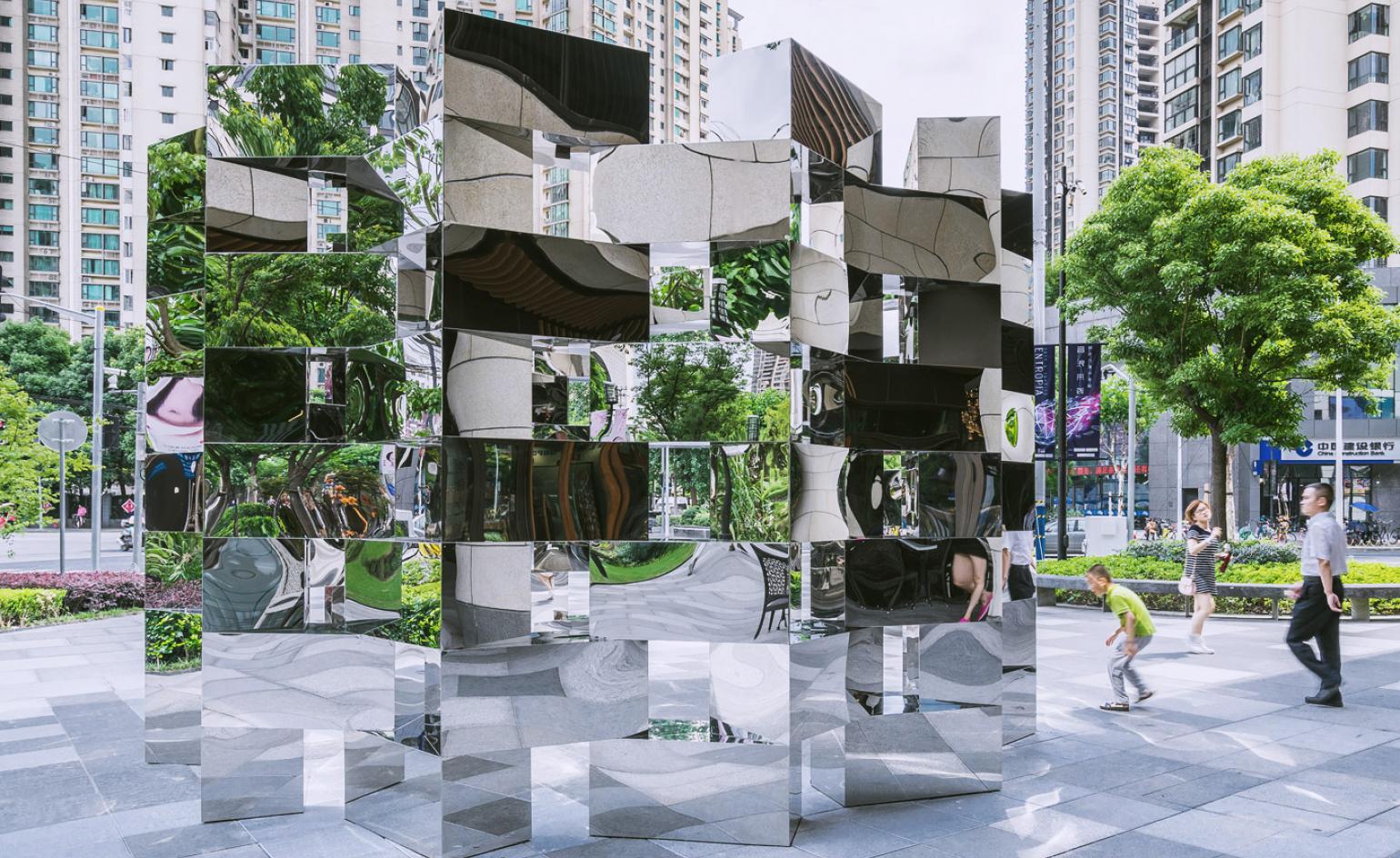
Ring – Chain, by Arnaud Lapierre
Artists have long used repetitive motifs and mirrors in their work to represent everything from introspection to mind-bending symbols of eternity, but in recent years, few have done it with the same degree of levity as Arnaud Lapierre. Following Ring, his still much-talked-about 2011 cylindrical wall of mirrors in the middle of Place Vendôme in Paris, the artist has revisited the motif for Ring – Chain, his first permanent installation in China. Located in the forecourt of the Hall of the Moon, Ruihong Tiandi, a mixed-use development in Shanghai, Ring – Chain comprises 88 large blocks of mirrored glass.
Ruihong Tiandi – Hall of the Moon, 188 Ruihong Road (corner of Tianhong Road), Hongkou District, Shanghai, China.
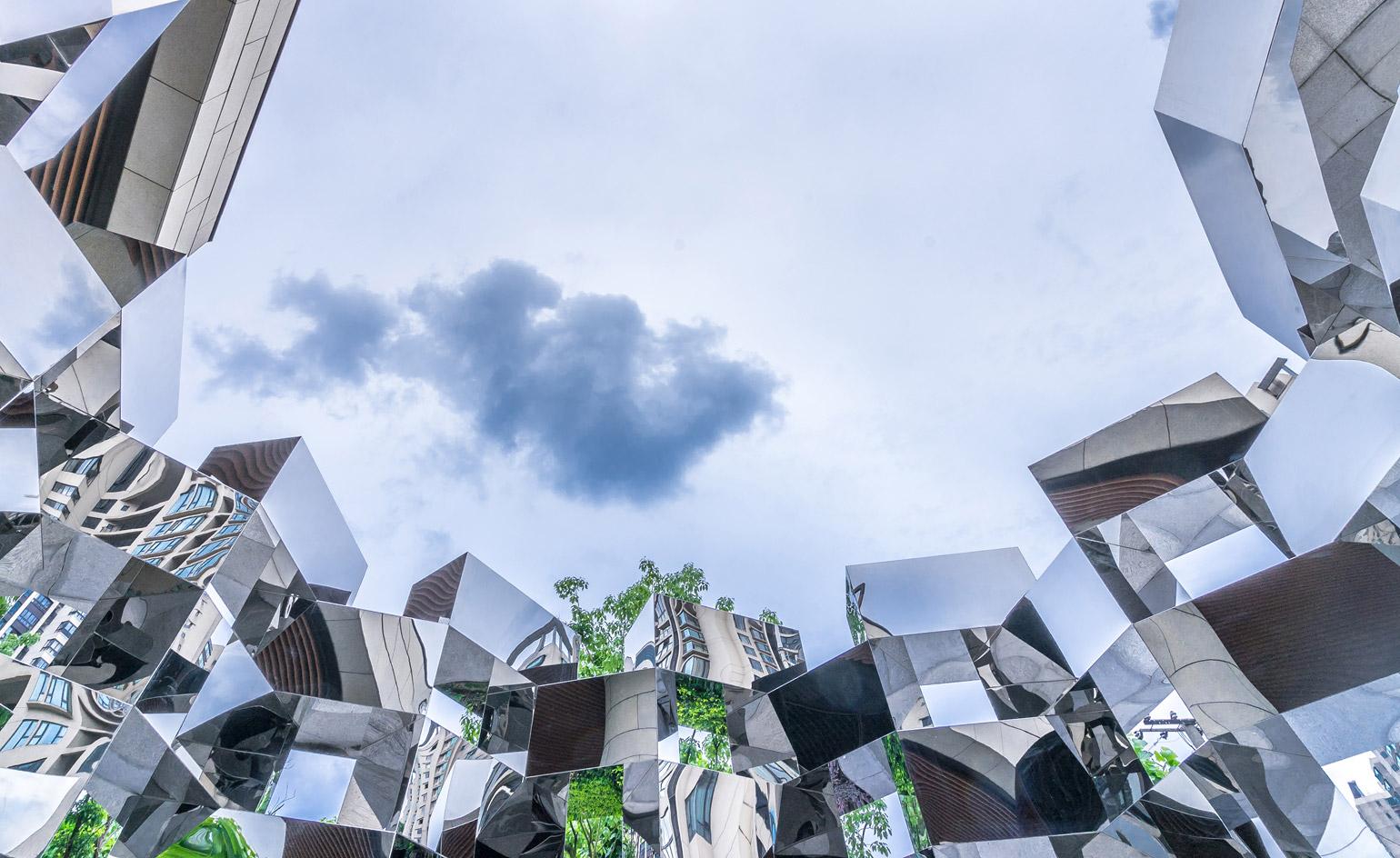
Ring – Chain, by Arnaud Lapierre
Set this close to the entrance, visitors are virtually compelled to pass through the 3.5m high, 5.5m long structure, to be confronted by a dizzying infinity of their reflections. ‘The very first impression is the experience of a change in the urban area: a kind of temporal kinetics,’ says Lapierre who collaborated with design studio UAP on the project. ‘The facets of each mirror reflect the place and reconstruct an alternate image that breaks the reading of the space. The installation works at this stage as a visual intrusion, an acceleration that changes the perception of the visited place. This is a spatial rediscovery.’
Ruihong Tiandi – Hall of the Moon, 188 Ruihong Road (corner of Tianhong Road), Hongkou District, Shanghai, China.
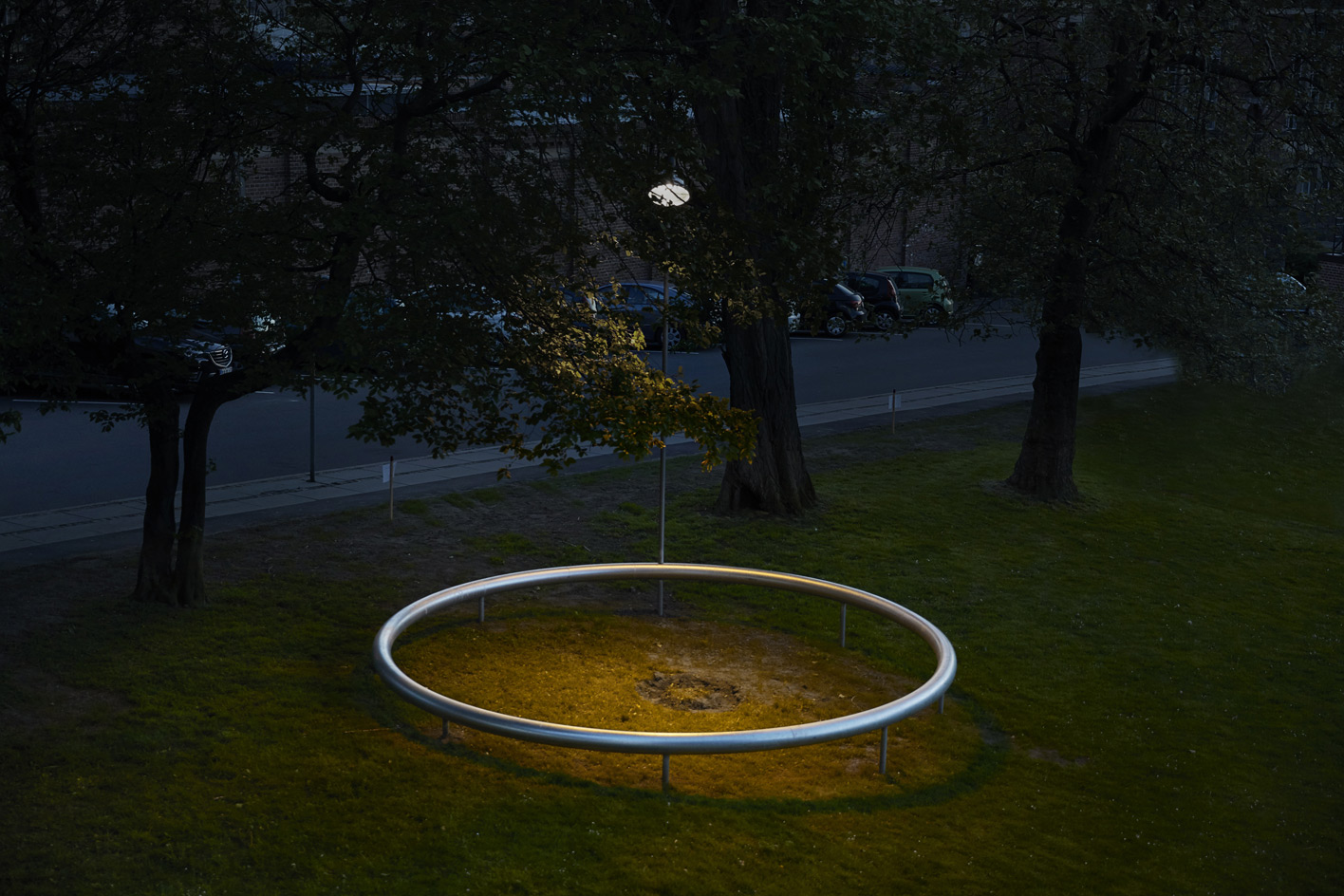
Qui, by Ronan and Erwan Bouroullec
This summer, design duo Ronan and Erwan Bouroullec present a series of outdoor sitting installations, intended to act as informal (and minimally stylish) meeting points. Situated within the park surrounding Kunsthal Aarhus arts centre, the four installations mark the museum’s centenary. The works are derived from the ‘Rêveries Urbaines’ exhibition staged at Vitra Design Museum in October last year, and present a collection of imaginative solutions to rethink approaches to urban architecture, and the conviviality of Aarhus. The disc-shaped benches, made from galvanised steel, are suited for sitting or reclining. Each ring appears to be floating above the ground, sparking the interest of passers-by, and allowing the grass to grow freely beneath. Two of the installations are surrounding trees, the third features a lamp, (acting as a lighthouse-like guide to the installation’s position). The final platform holds a fireplace in its centre, allowing visitors to huddle around the embers.
Kunsthal Aarhus, J M Mørks Gade 13, 8000 Aarhus C, Denmark.
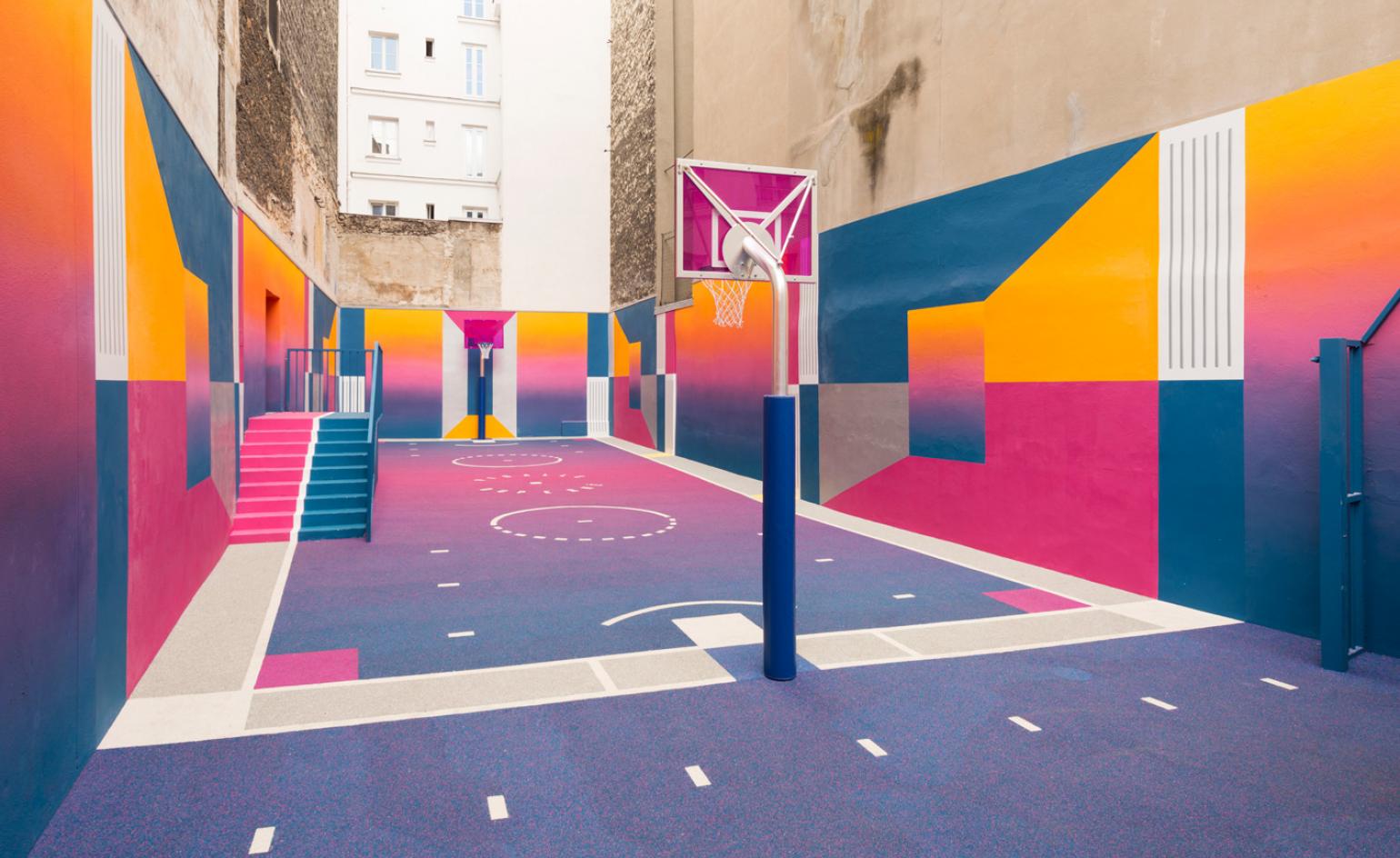
Pigalle Duperré, by Ill-Studio, Pigalle and Nike
Once again the 9th arondissement basketball court in Paris has been transformed — this time in hues of blue, pink, purple and orange. With support from Nike, art direction and graphic design firm Ill-Studio has collaborated with the eponymous fashion brand Pigalle to completely redesign the space.
22 Rue Duperré, 75009 Paris, France.
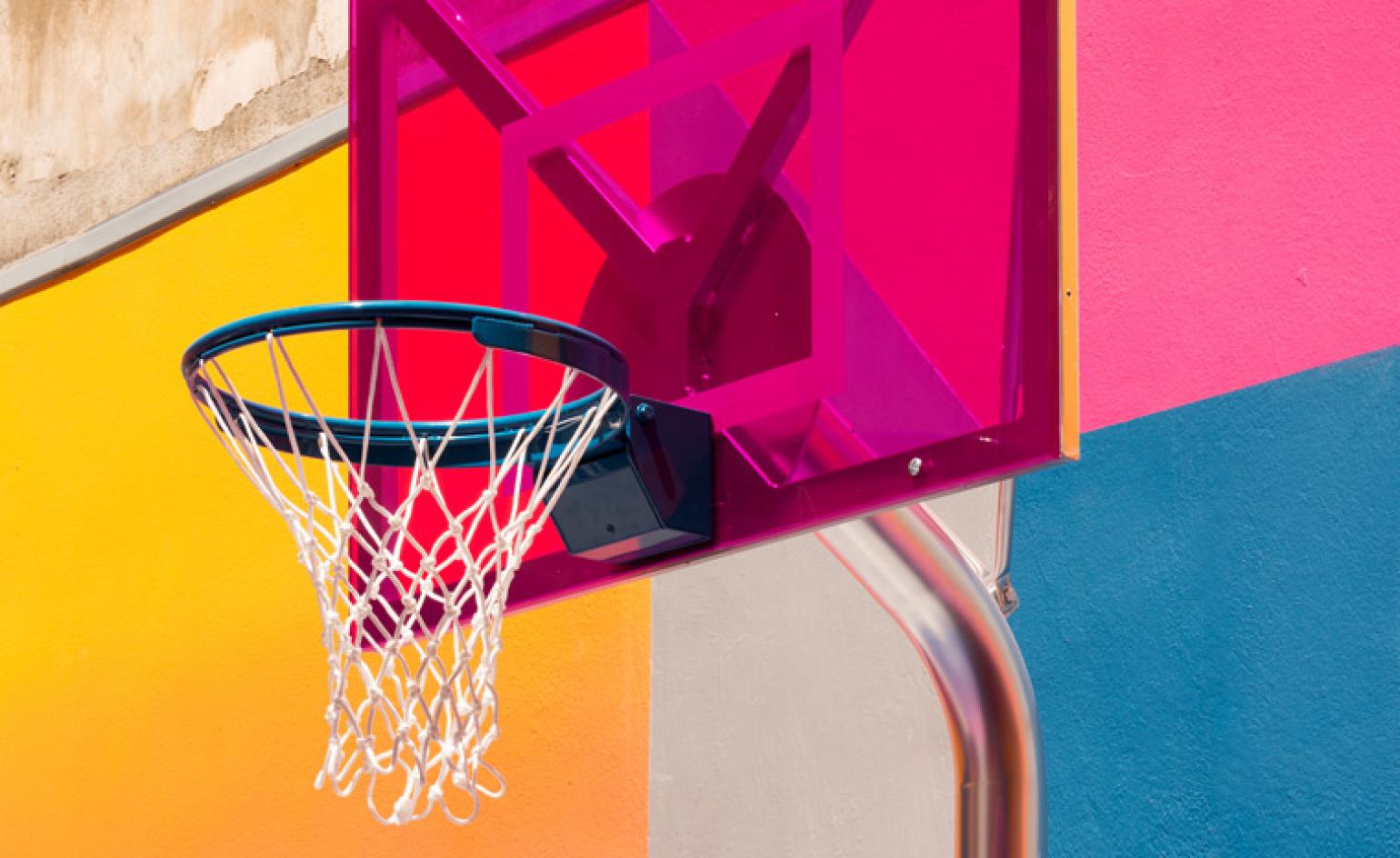
Pigalle Duperré, by Ill-Studio, Pigalle and Nike
Situated opposite Pigalle’s own basketball store, the redesign coincides with the fashion brand’s latest clothing collaboration with Nike. The court features backboards made out of transluscent pink plastic, and panels of mesh to allow onlookers to peer inside.
22 Rue Duperré, 75009 Paris, France.
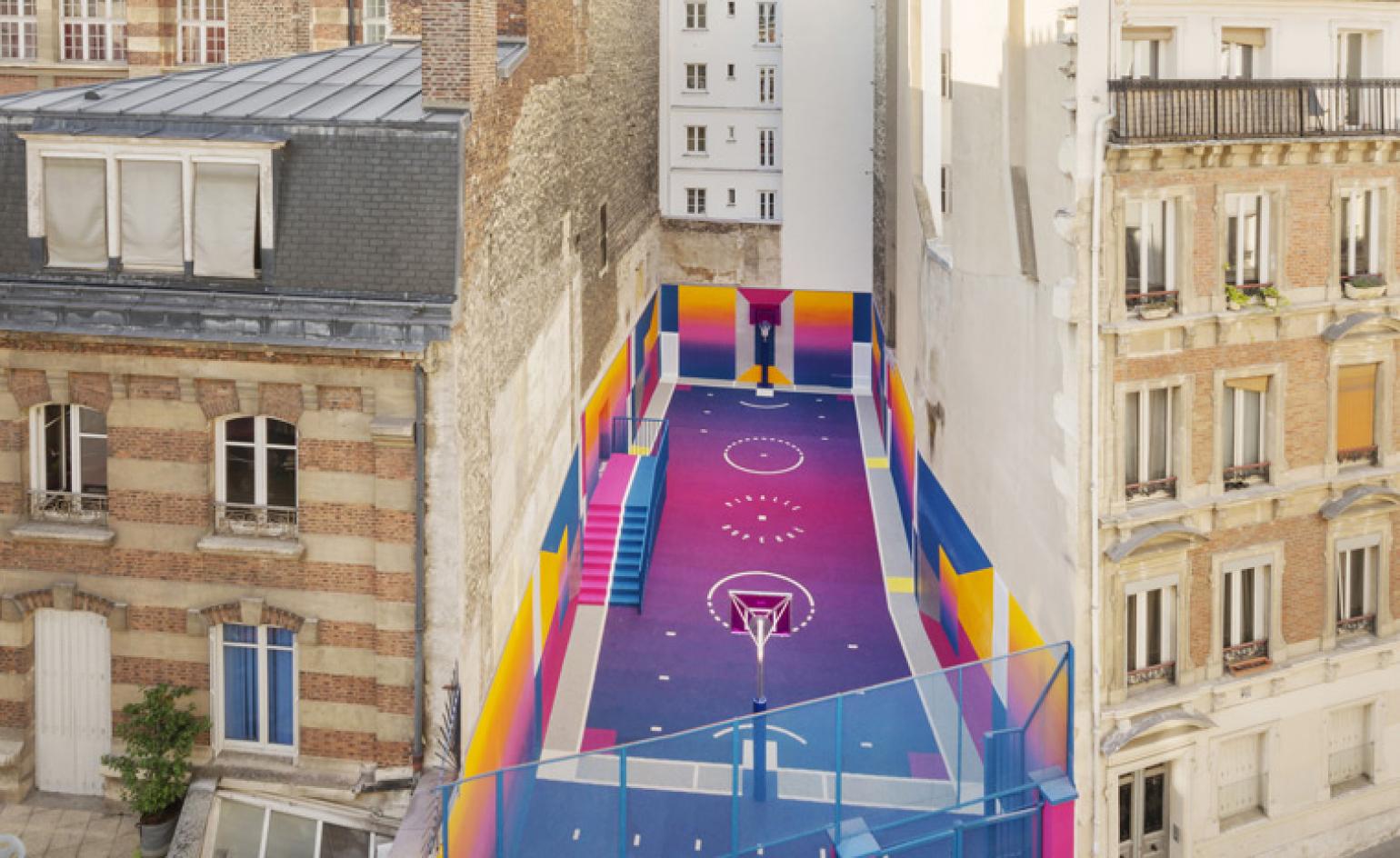
Pigalle Duperré, by Ill-Studio, Pigalle and Nike
In an update from 2015’s shades of blue, red, yellow and white, the court continues its neverending quest for modernity among the historic properties of the area, where Pigalle founder Stephane Ashpool grew up. The collaborators aim to ‘explore the relationship between sport, art and culture’, as well as its ‘emergence as a powerful socio-cultural indicator of a period in time’.
22 Rue Duperré, 75009 Paris, France.
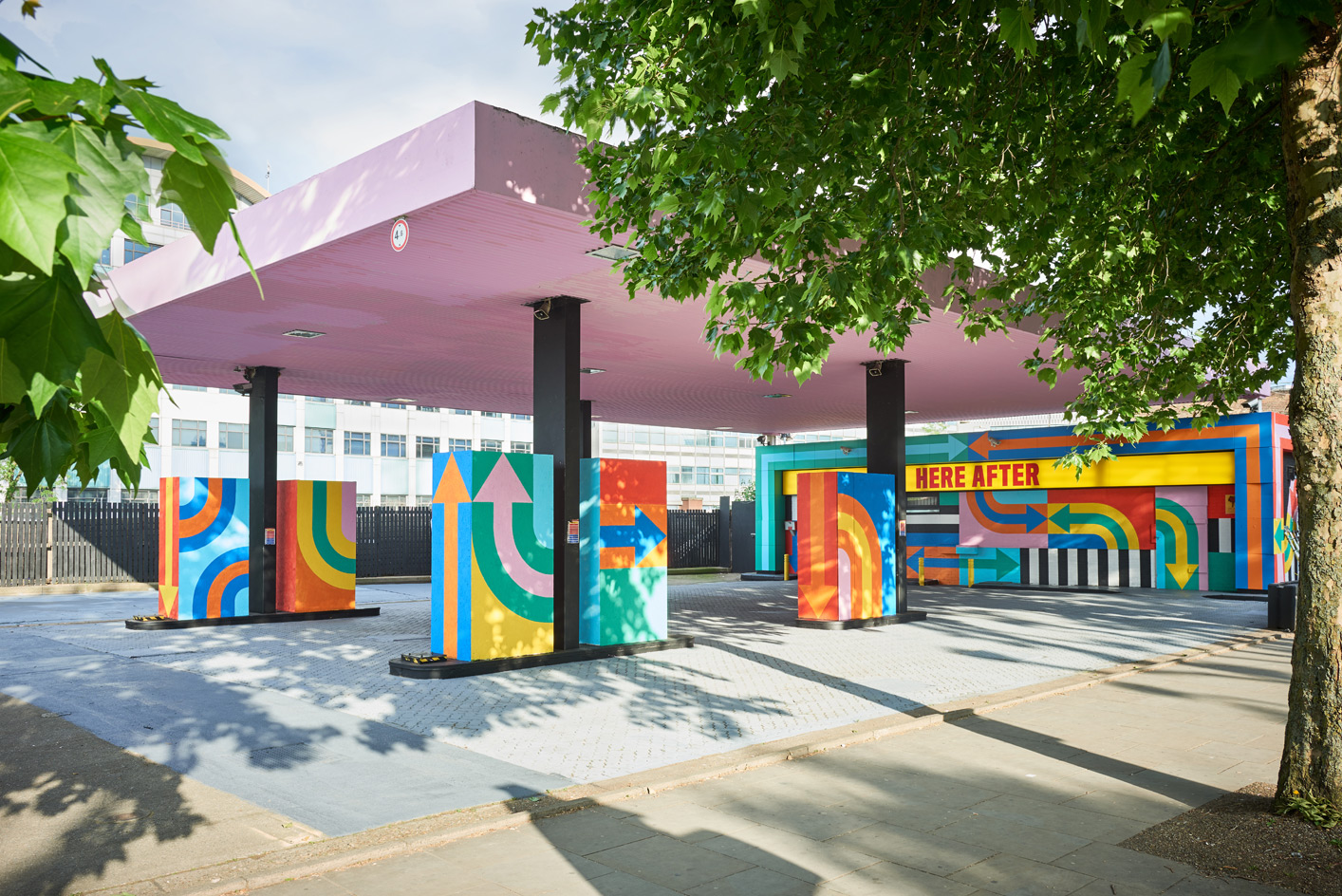
Here After, by Craig & Karl
For their first public London offering, artists Craig Redman and Karl Maier of Craig & Karl have playfully revived a derelict petrol station. Located in the midst of the BBC’s former headquarters, due to reopen this year after extensive redevelopment, the colour scheme nods to the bright hues of a television test card.
Wood Lane, White City, London W12 7SB, UK,
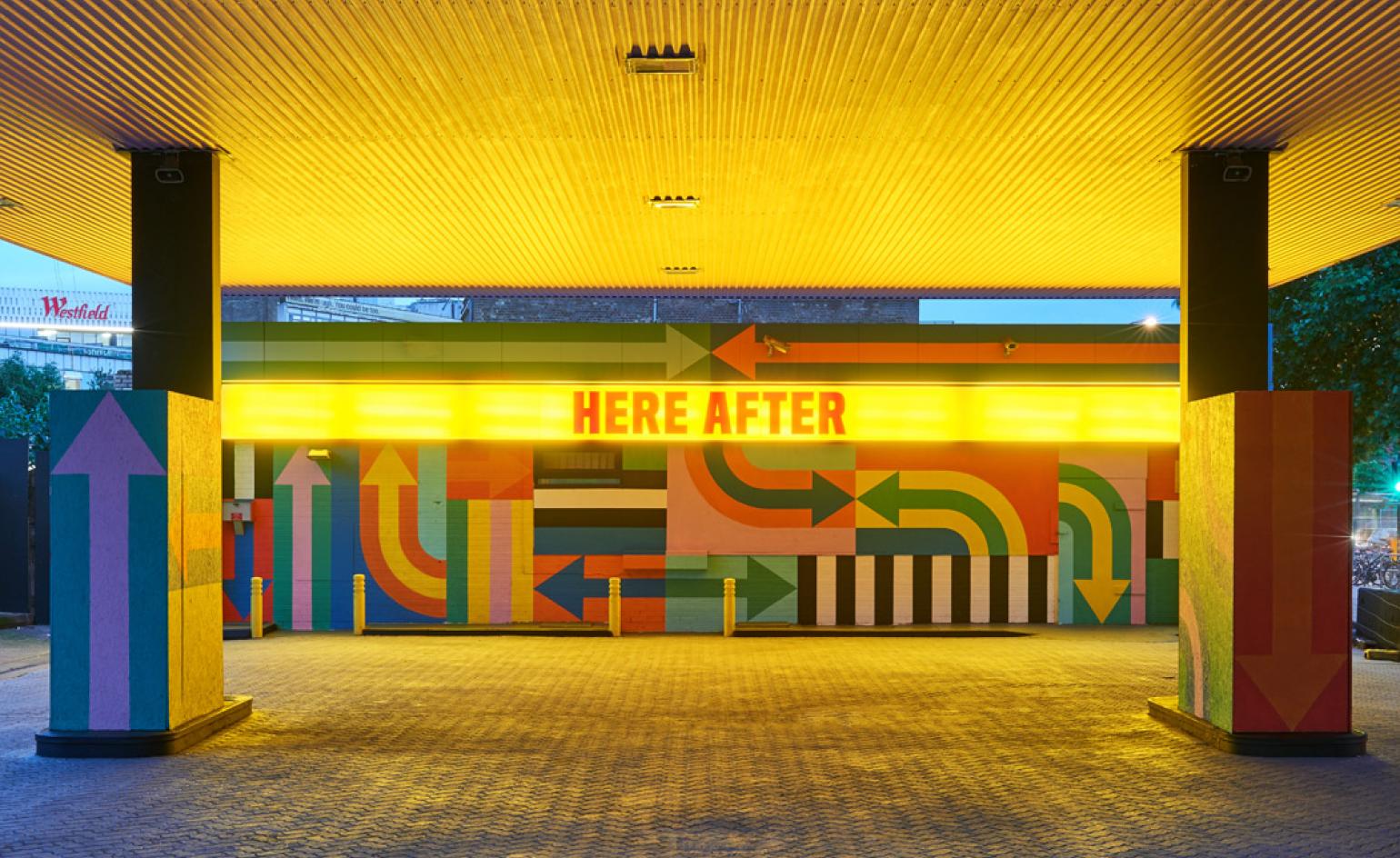
Here After, by Craig & Karl
The duo view this project as ‘the petrol station's second life, or wonder years’. The ‘Here After’ slogan branded against the foyer wall is a reference to heaven or utopia. ‘Now that the petrol station has fulfilled its duty, so to speak, it's free to enjoy itself.’
Wood Lane, White City, London W12 7SB, UK,
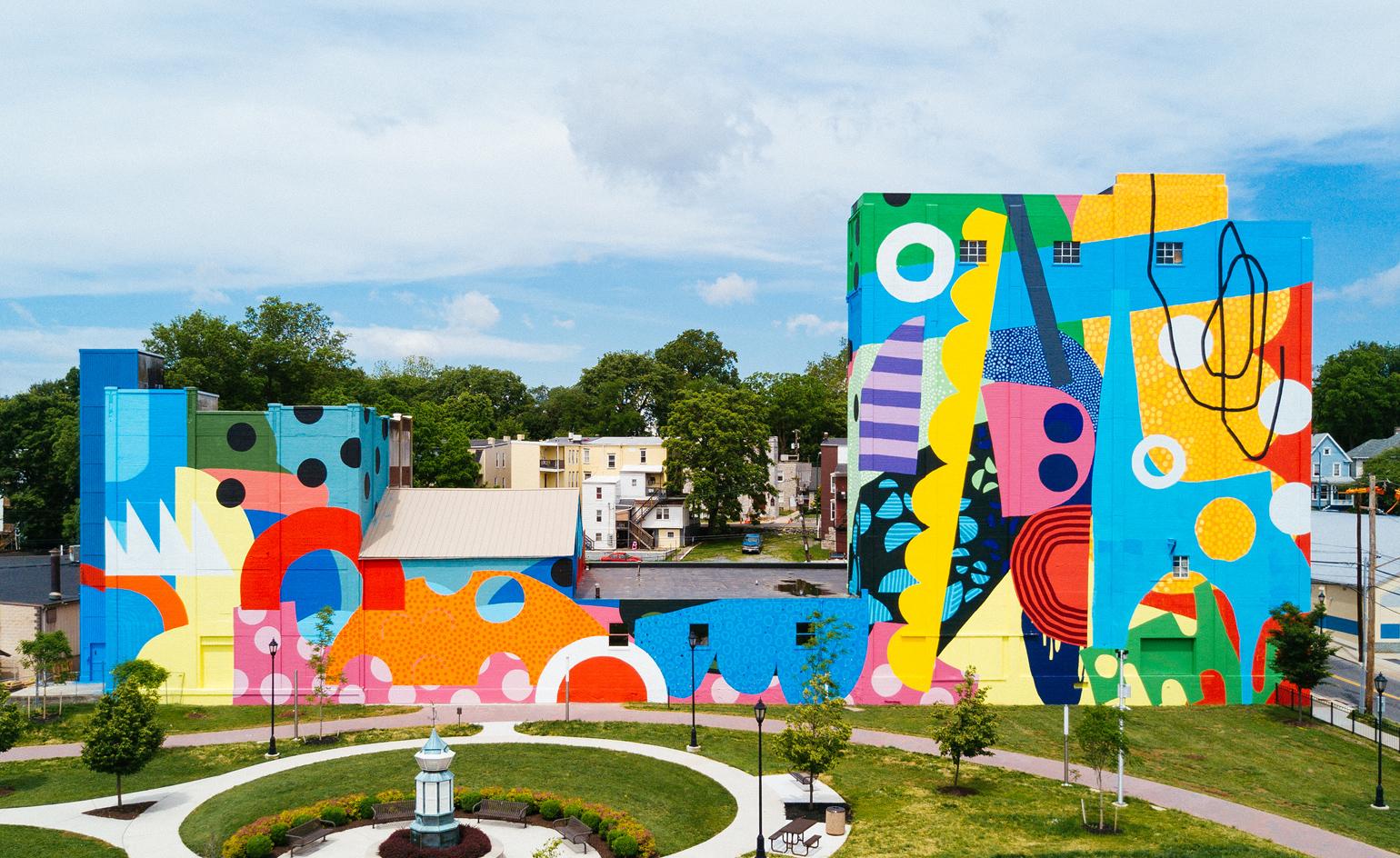
Mural of Unusual Size, by Hense
Contemporary artist and expressionistic painter, Alex Brewer, also known as Hense, has created a monolithic colourscape across the façade of an industrial compound. The mega-mural boasts an energetic tableau of multicoloured geometries, expressive lines and bold blocks of blue pigment, transforming a once-obtrusive industrial complex into a vibrant hue. Stretched across three buildings, the work is part of the Hagerstown Cultural Trail – an urban redevelopment project which connects the city’s most popular destinations through public art experiences. Brewer’s 80ft work acts as a vibrant beacon, visible from a considerable distance, which is a signature asset to both the trail and the city.
Baltimore Street, Hagerstown, Maryland, MD 21740, USA.
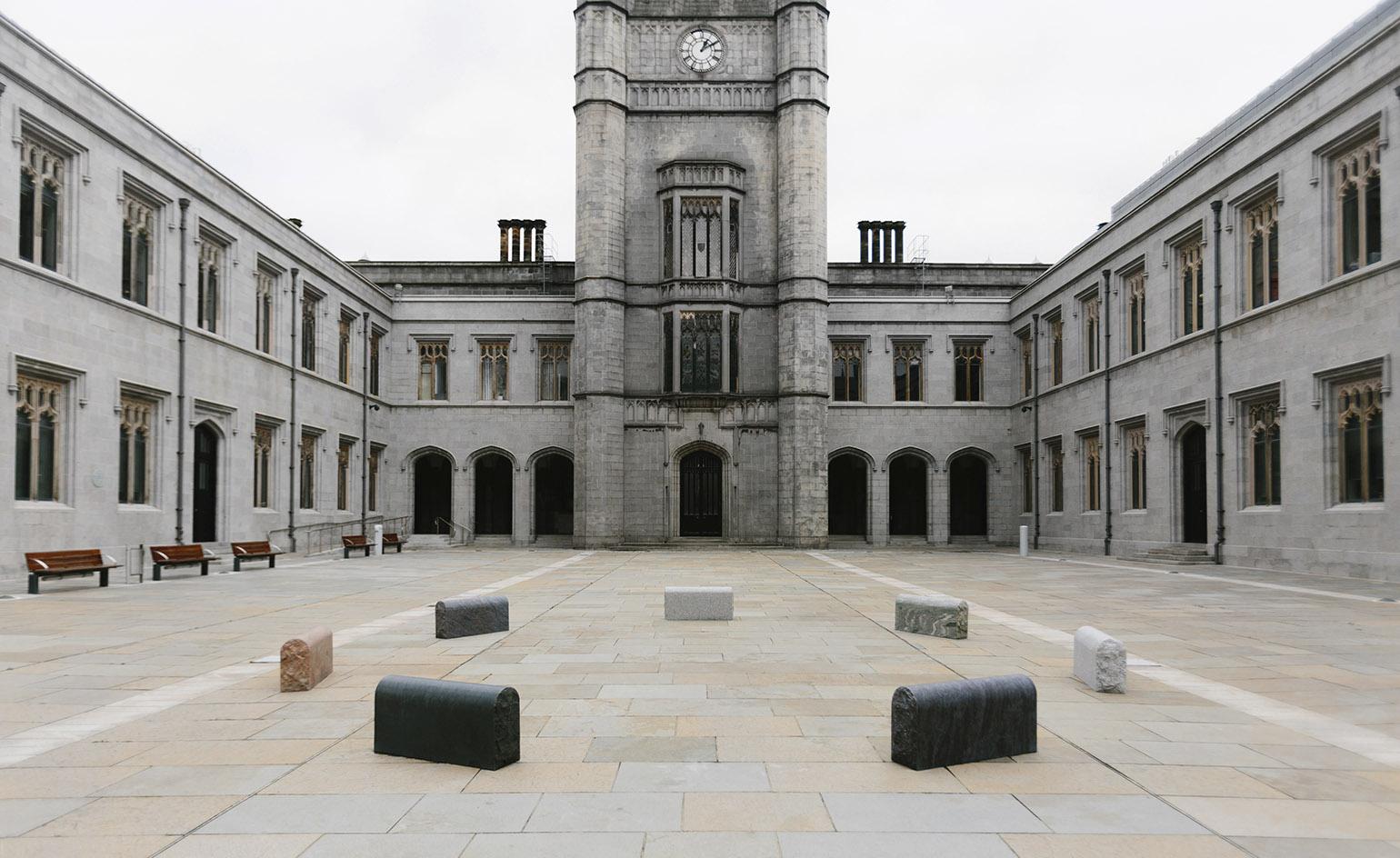
The Doric Boule
, by Nick Ross
Scottish designer Nick Ross is celebrating the traditional skills and renowned materials of his homeland. ‘The Doric Boule’ is an installation staged in the courtyard of the Marischal College, home to Aberdeen City Council. The idea, explains Ross, was to ‘create a social setting where people can come, discuss the topic of the day or simply just hang out’. Made from globally sourced granites, the circular arrangement of benches emphasises the communicative, outward looking nature of the work. ‘If granite is a symbol of the city,’ Ross adds, ‘then foreign granites represent the people who have moved into Aberdeen to help create the multicultural city we see today.’
Marischal College, Broad Street, Aberdeen AB10 1AB, UK.
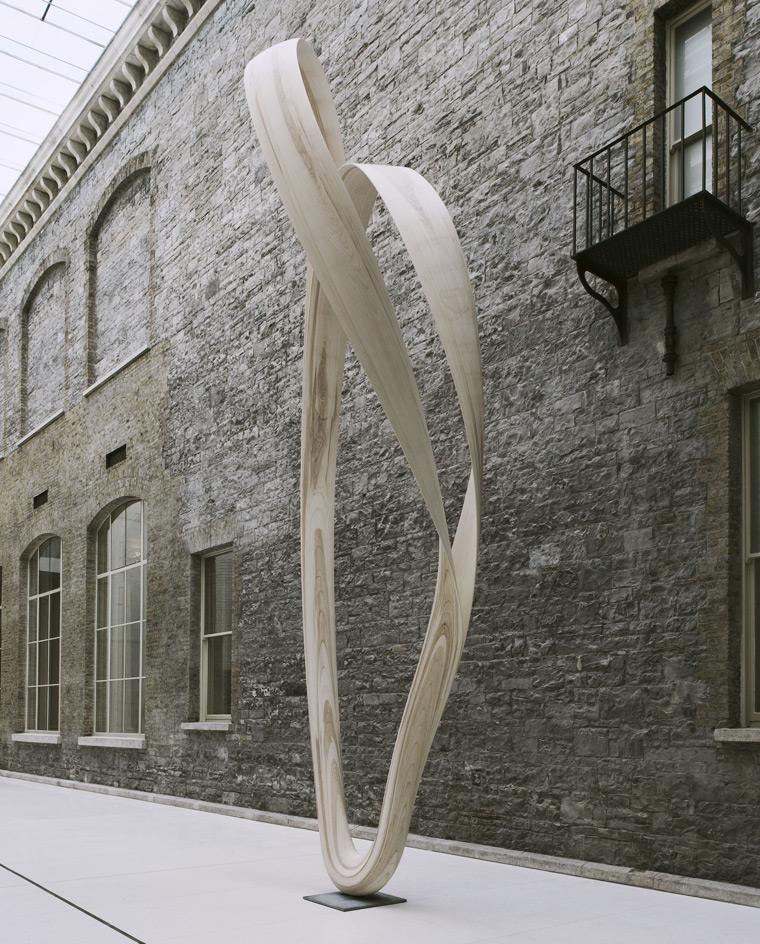
Magnus Modus
, by Joseph Walsh
Ireland-based Joseph Walsh Studio presents its latest commission, Magnus Modus, a large-scale, free-form sculpture. Meticulously crafted from olive ash wood, the undulating 7m installation is now a permanent feature of the refurbished National Gallery of Ireland. Resting upon a small Kilkenny limestone base, Magnus Modus delineates space in its slender aspect, creating shadows and delicate lines of movement, transforming the new Heneghan Peng-designed courtyard in which it stands. ‘Magnus Modus is the very reflection of my search for effortless design harmony,’ says Walsh.
National Gallery of Ireland, Merrion Square W, Dublin 2, Ireland. Photography: Roy Hewson
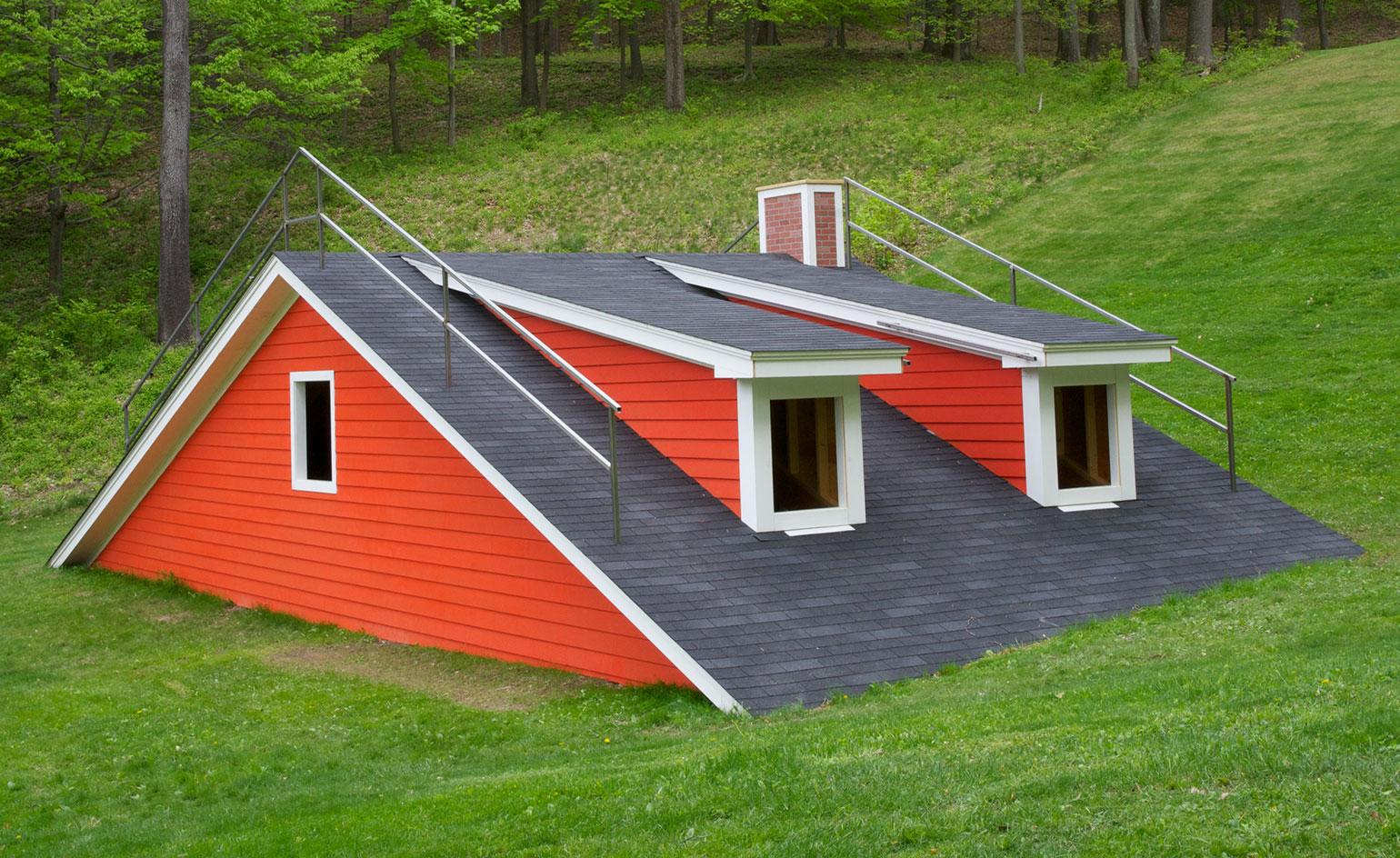
Oracle of Lacuna, by Heather Hart
In the fifth iteration of Storm King Art Center’s ‘Outlooks’ series, American artist Heather Hart installs a quirky red attic, peeking out of the hills in the 500-acre sculpture park. The tar-topped roof appears to be emerging or descending from the landscape, occupying the kind of ‘in-between’ space of flux that Hart’s work is known for. Hart’s sculpture contains an inner sanctuary. Visitors can climb atop or duck through the windows, finding themselves in an attic, filled with an oral history installation of the Hudson Valley, playing loud through speakers. Public performances, workshops and gatherings will be staged on the roof, aiming to engage with local people, incorporating both social and participatory elements in Hart’s work.
Storm King Art Center, 1 Museum Road, New Windsor, NY 12553, USA.
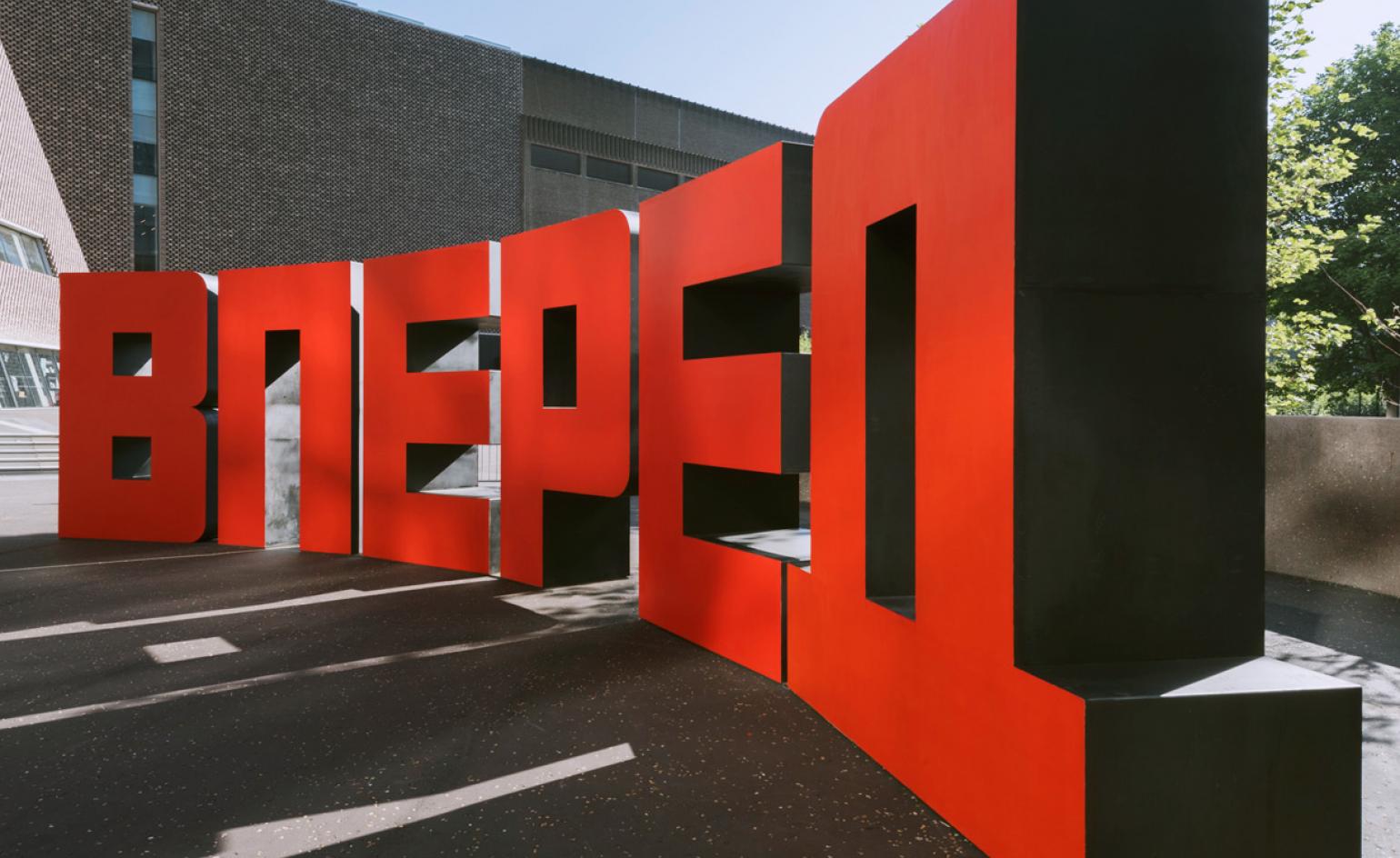
Forward, by Erik Bulatov
Following on from Fujiko Nakaya’s billowing fog sculpture, the Tate Modern’s latest outdoor installation is just as eye-catching. Created by Moscow’s Erik Bulatov, the work spells out the word ‘forward’ four times in 10ft-high Cyrillic letters, marking 100 years since the Russian Revolution. Onwards!
Tate Modern, Bankside, London SE1 9TG, UK.
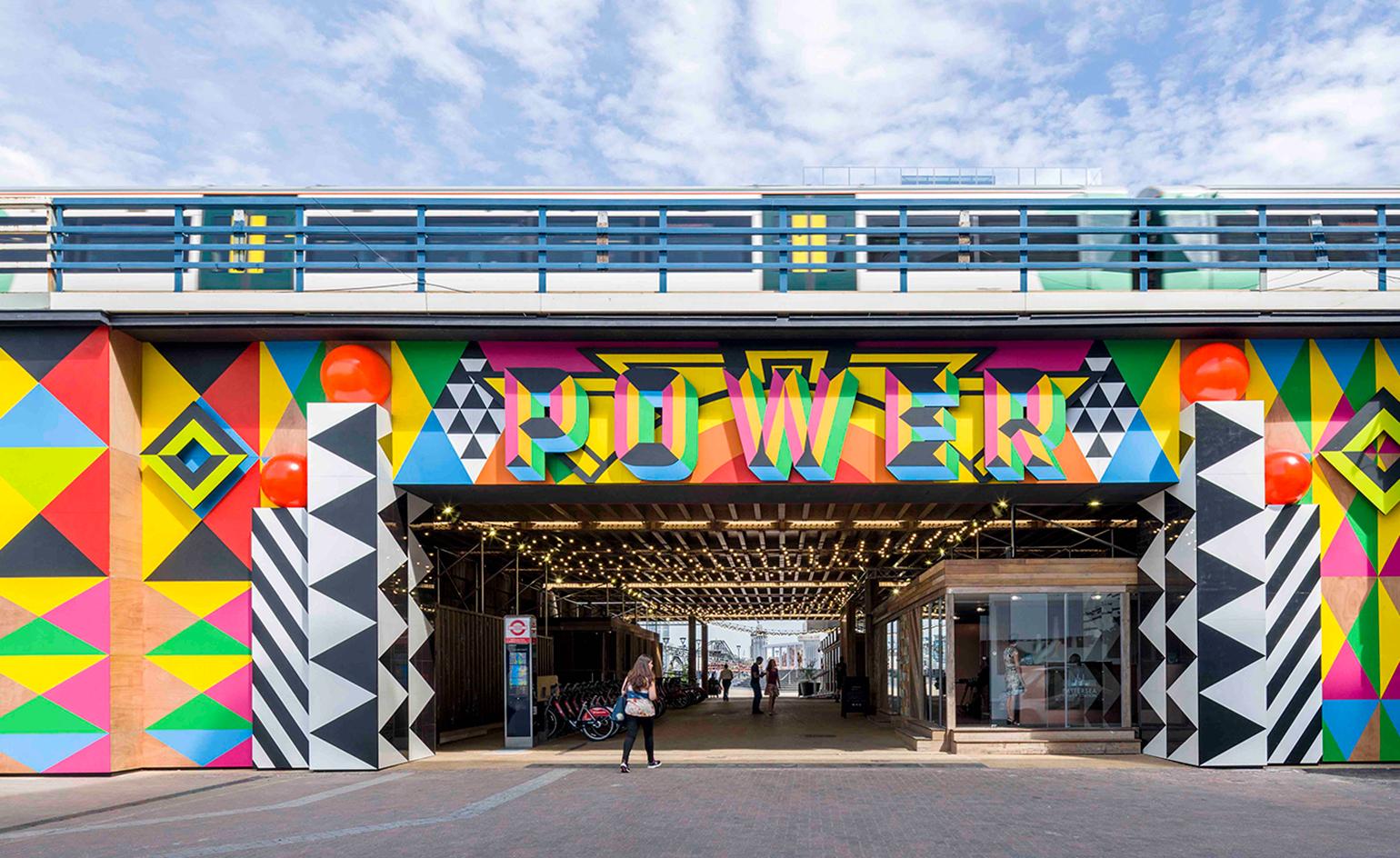
Power, by Morag Myerscough
London designer Morag Myerscough has teamed up with Battersea Power Station to unveil Power, a loud welcome to visitors on the iconic landmark’s Grosvenor Arch. Based on her own recollections of the station, the mural epitomises 1920s and 30s societal optimism in the production of energy. A lively and dynamic break from its neighbours, Power draws inspiration from the station itself. Mysercough painted the marine plywood panels in her traditional palette of strong colours, geometrics and bold typefaces. Elements have been borrowed not only from recorded memories of the 1951 Festival of Britain – of which she says was a riot of ‘colour and enjoyment’, much like her own work – but also from the original art deco doors to the directors’ boardroom.
Battersea Power Station, 188 Kirtling Street, London SW8 5BN, UK
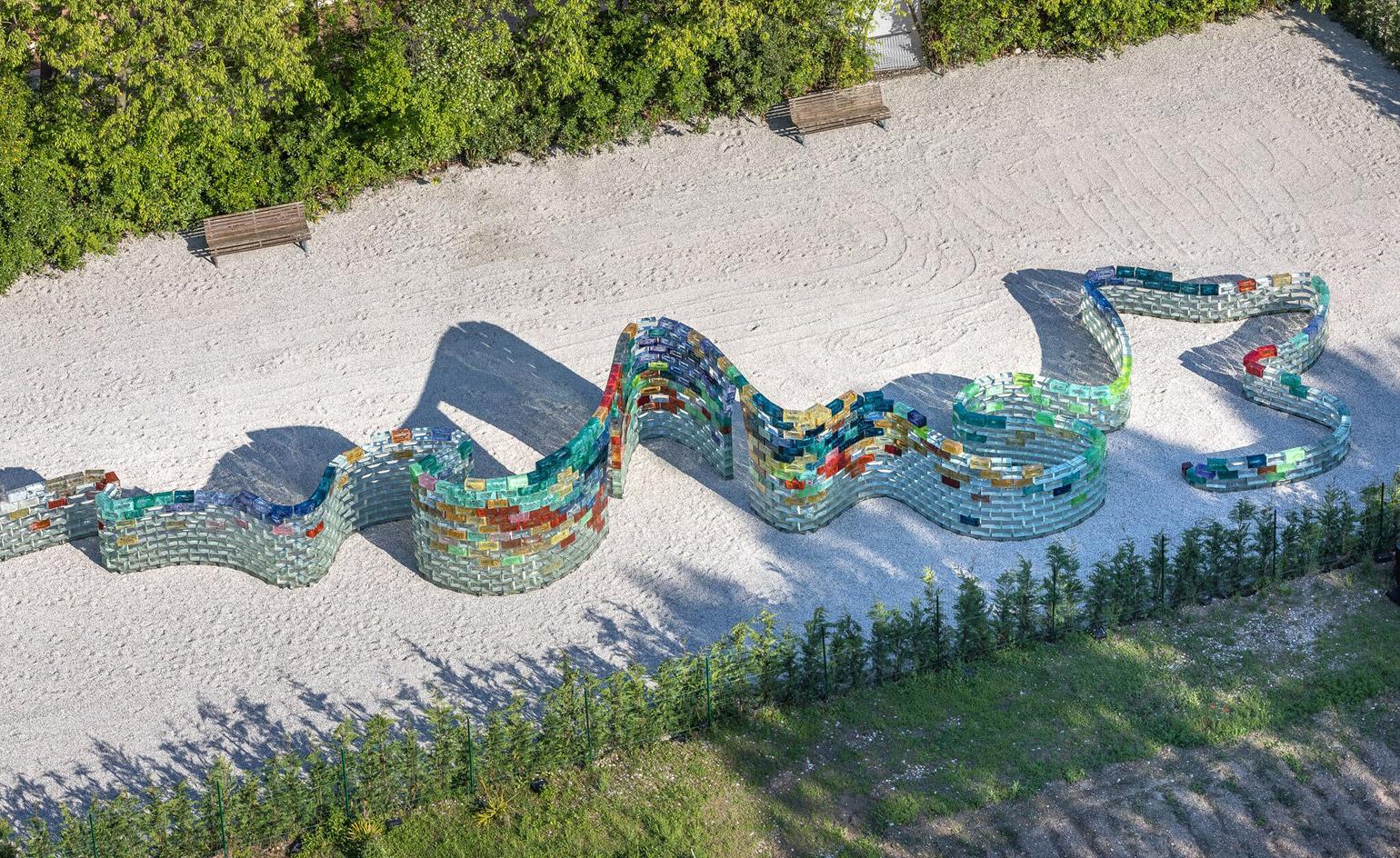
Qwalala, by Pae White
The second outdoor installation to be commissioned by Venetian glassmaking initiative Le Stanze del Vetro, Pae White’s Qwalala is a monumental wall created from 3,000 glass bricks. Each of the blocks was hand cast in the Veneto region; half are clear, while the other 1,500 were created in a spectrum of 26 colours imbued with a swirling, marbled visual effect. The name of the work – a monumental 75m long and 2.4m high – is derived from a Native American Pomo word evoking the languid course of Northern California’s Gualala river.
Le Stanze del Vetro, Venice, Italy
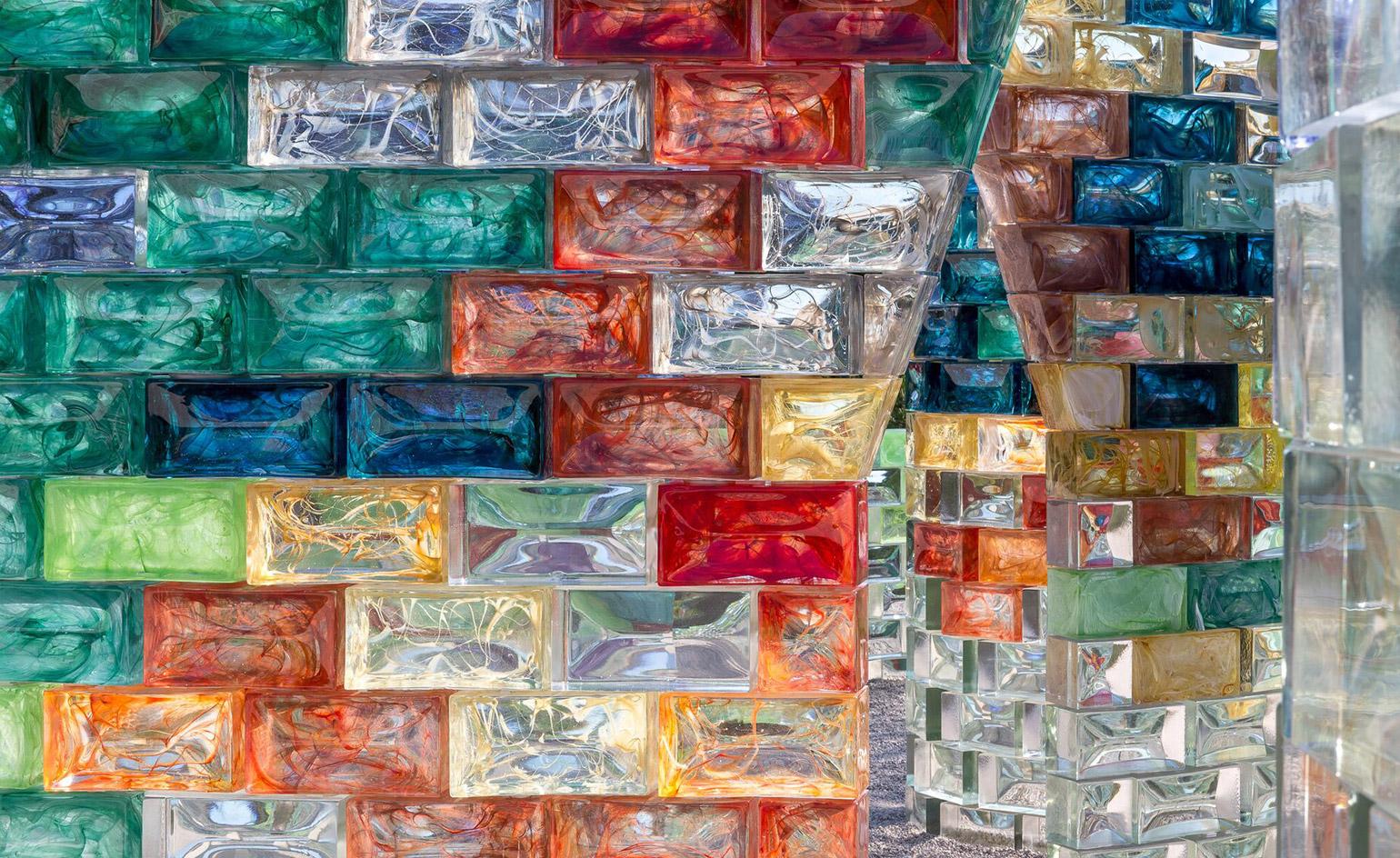
Qwalala, by Pae White
White’s work explores the limits of glass as a materials, explains the Fondazione Giorgio Cini (the Venetian non-profit behind Le Stanze del Vetro); as well as highlighting her commitment to marrying banal materials with cutting-edge construction and technology. It is, they state, both art and architecture.
Le Stanze del Vetro, Venice, Italy
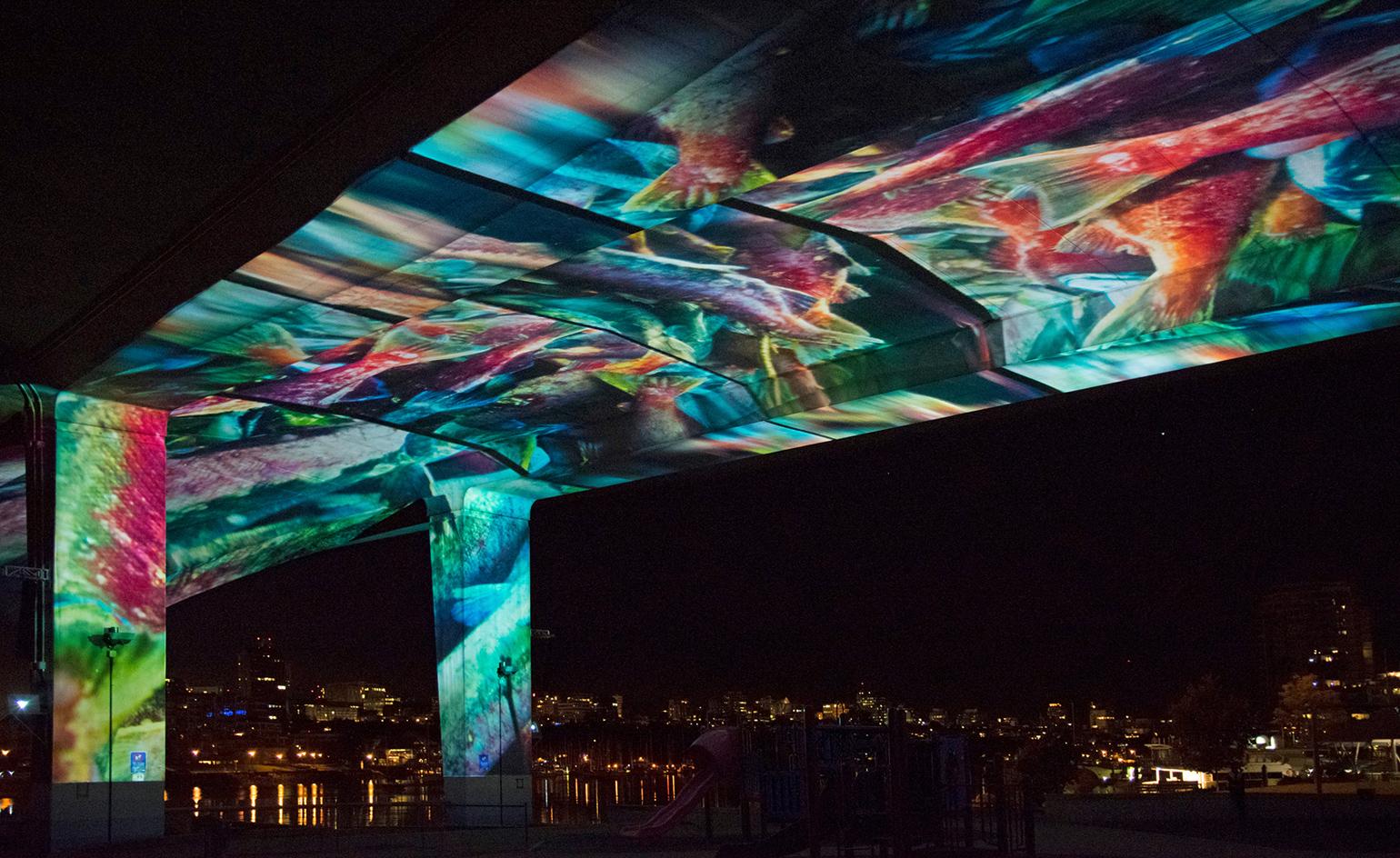
Uninterrupted, by Nettie Wild
In a city that gets its cultural kicks deep in the woods of Stanley Park at Theatre Under the Stars, there's now a new trend: spectacle under the bridge. Uninterrupted, a short film that follows the journey of the Pacific salmon, highlights an underutilised urban space and returns the natural world to postindustrial Vancouver. The visually sumptuous high-tech digital artwork was inspired by filmmaker Nettie Wild’s first trip to Adams Creek in the British Columbia interior, one of the most important sockeye-breeding areas in North America.
Wild spent four years with a special camera that shoots 2,200 frames per second, compiling a languid environmental manifesto that unfolds like a dance, with close-ups and graceful motion in the journey upstream. The twist is in the projection, directly onto the concrete landscape of False Creek. With eight digital projectors, Wild has orchestrated a three-month run on the underside of the hulking Cambie Street Bridge; the film will play five nights a week until 24 September. She designed the spectacle, she says, to show the interconnectedness of nature and urban life and highlight the extent to which we take salmon for granted. Her final edit is a 25-minute salmon ballet, set to an ambient soundtrack of original music by Owen Belton. On opening night last month members of the local Salish tribe of First Nations lowered the bones of a single coho salmon into the waters of False Creek – its own kind of performance art. In a neighbourhood of residential towers that once teemed with salmon, this and the film itself are pure visual theatre: ghosts of the creek’s pre-industrial past.
Cambie Street Bridge, Vancouver, BC, Canada
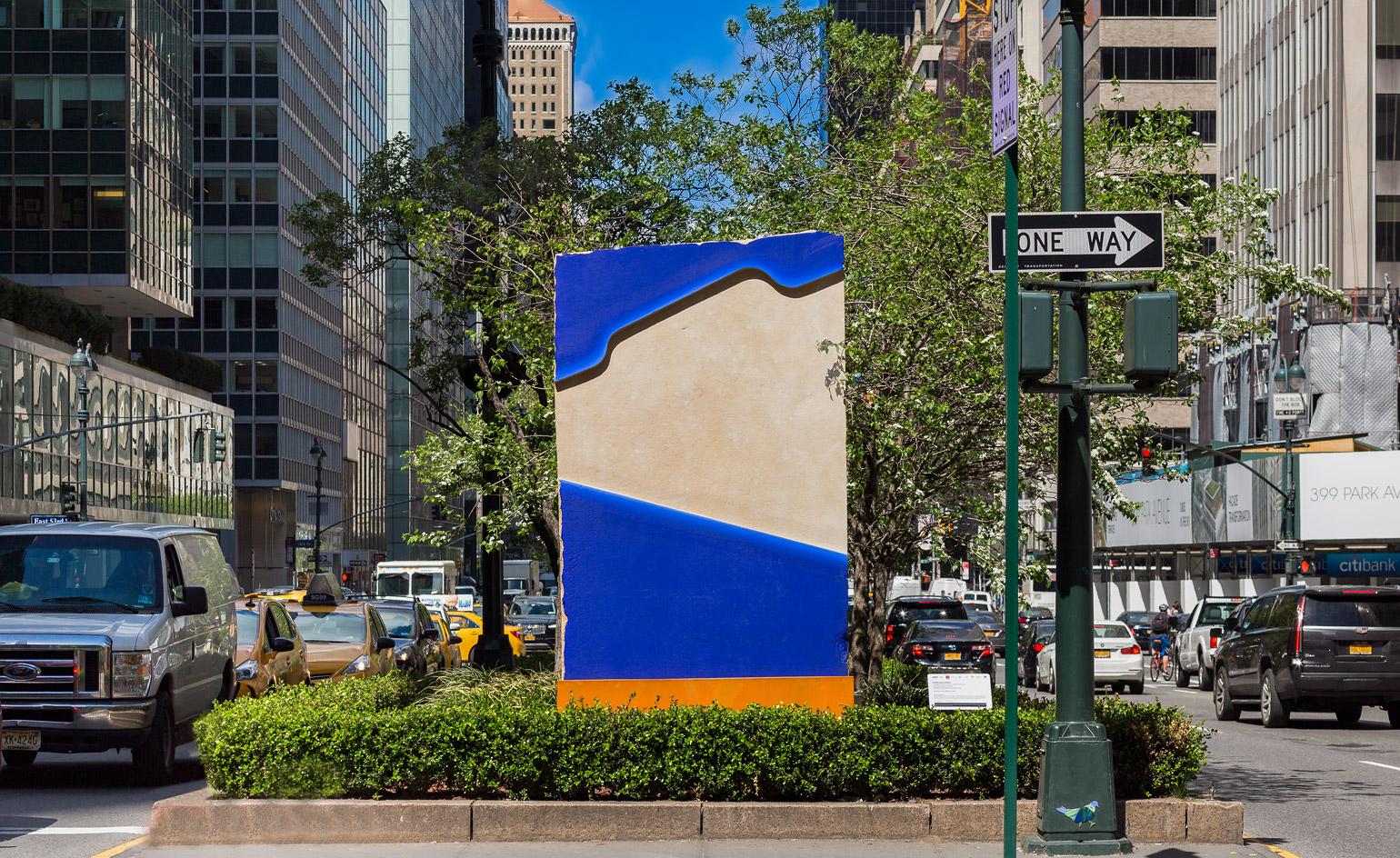
Morpho’s Nest in the Cadmium House, by Lluís Lleó
Hailing from Catalonia, artist Lluís Lleó introduces a site-specific series of five paintings that can be found along New York's Park Avenue Malls. A tension between colour and form, the ancestral (al)-fresco paintings sit upon a carved façade of a 13ft-high, 7,000lb slab of sandstone.
Until 31 July. Park Avenue Malls, between 52nd Street and 56th Street, New York, NY 10022, USA.
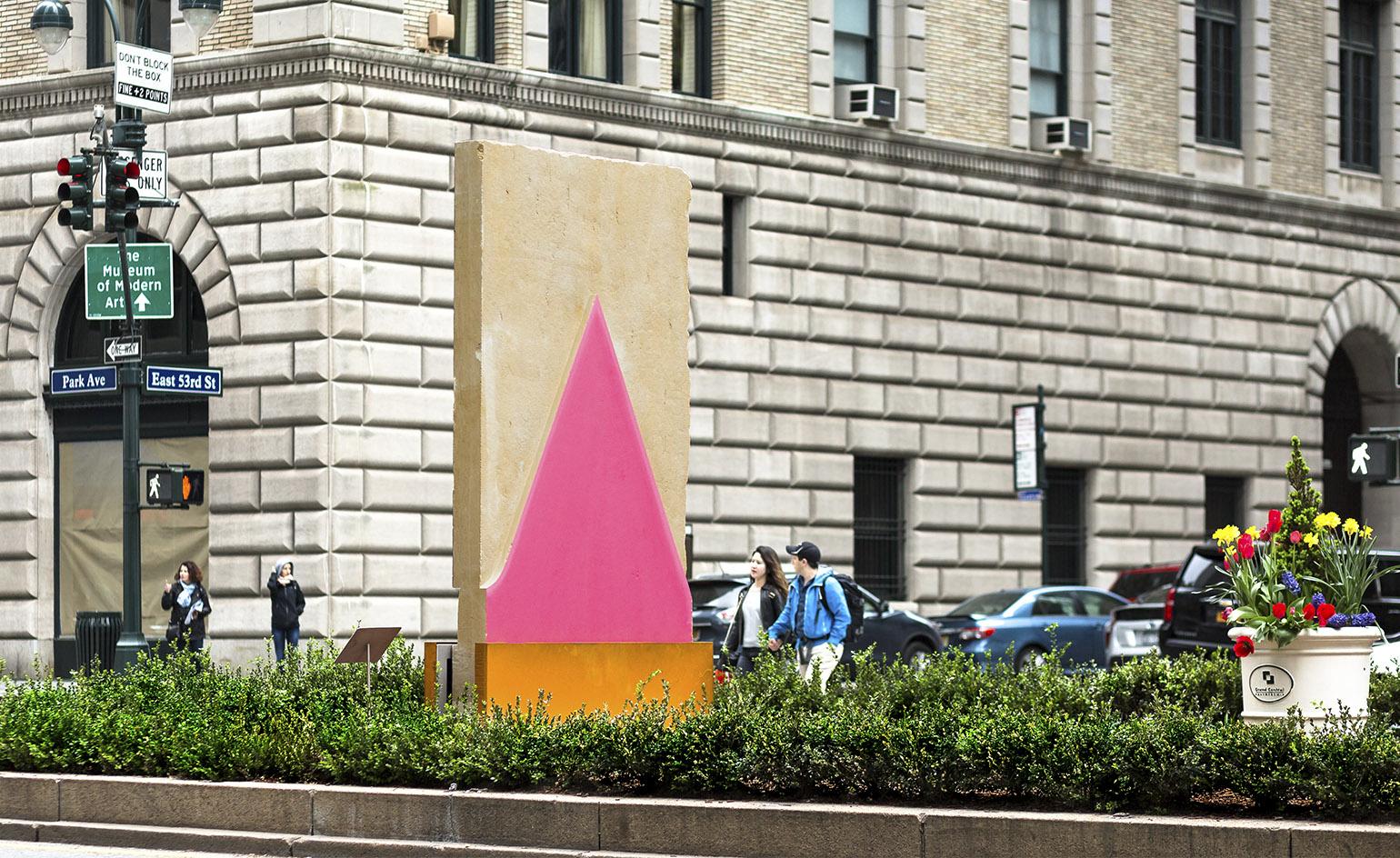
Morpho’s Nest in the Cadmium House, by Lluís Lleó
For Lleó, this works are an encounter between tradition and modernity, a merger of Catalan Romanesque fresco painting and contemporary American art. Each monolith encourages the viewer to alter their perception, as Lleó brings objects reserved for interior spaces to an exterior context, juxtaposing each of the works with the surrounding environment.
Until 31 July. Park Avenue Malls, between 52nd Street and 56th Street, New York, NY 10022, USA.
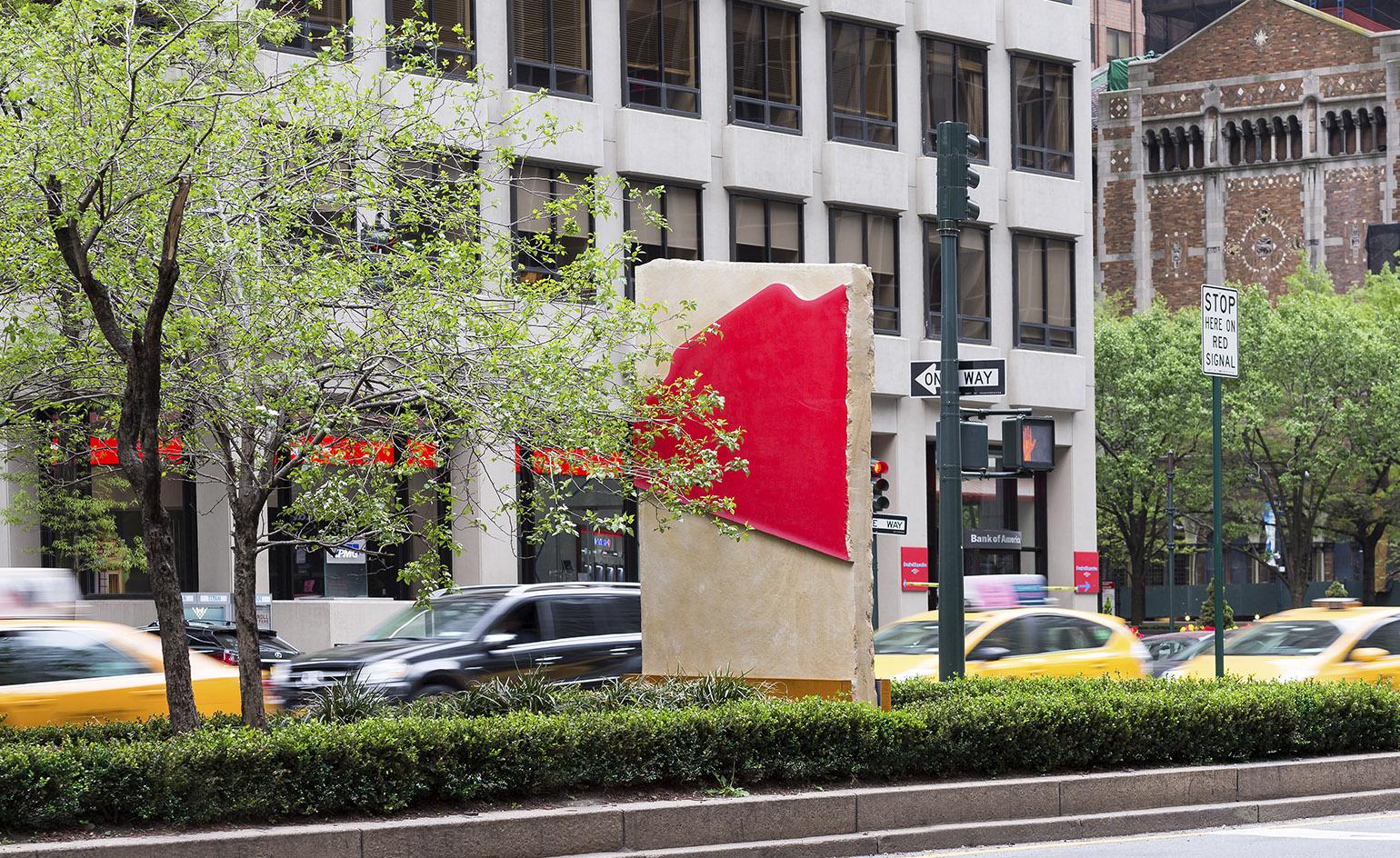
Morpho’s Nest in the Cadmium House, by Lluís Lleó
‘These stones are on the one hand a refuge and on the other a protection of fragility, delicate and fleeting,’ says Lleó, a humble nod to the fragile Morpho butterfly species which it’s title references. A part of NYC’s Art in the Parks programme, Lleó’s series transforms harsh materials into a three-dimensional transcendent experience, hard to miss around 52nd to 56th Streets.
Until 31 July. Park Avenue Malls, between 52nd Street and 56th Street, New York, NY 10022, USA.
-
 All-In is the Paris-based label making full-force fashion for main character dressing
All-In is the Paris-based label making full-force fashion for main character dressingPart of our monthly Uprising series, Wallpaper* meets Benjamin Barron and Bror August Vestbø of All-In, the LVMH Prize-nominated label which bases its collections on a riotous cast of characters – real and imagined
By Orla Brennan
-
 Maserati joins forces with Giorgetti for a turbo-charged relationship
Maserati joins forces with Giorgetti for a turbo-charged relationshipAnnouncing their marriage during Milan Design Week, the brands unveiled a collection, a car and a long term commitment
By Hugo Macdonald
-
 Through an innovative new training program, Poltrona Frau aims to safeguard Italian craft
Through an innovative new training program, Poltrona Frau aims to safeguard Italian craftThe heritage furniture manufacturer is training a new generation of leather artisans
By Cristina Kiran Piotti